

Energy Sec. Wright Visits Northport Power Station
By Matt Meduri
In the fight for clean and cheap energy, Energy Secretary Chris Wright (R-CO) visited the Northport Power Station to talk about updating and upgrading existing power stations to meet demand, as well as pitch President Donald Trump’s (R-FL) ambitious energy policies. Wright founded Pinnacle Technologies in 1992, which was involved in commercial shale gas production fracking. He served as its CEO through 2006. In 2011, he founded Liberty Energy, a company which, as of 2023, is valued at $2.8 billion, as per The Wall Street Journal. Wright earned media recognition in 2018 for drinking fracking fluid to demonstrate its safety and to emphasize Liberty Energy’s “greener solutions” for chemical additives. Continued on page 4
Senator Mario Mattera (R-St. James) (Credit - Matt Meduri)
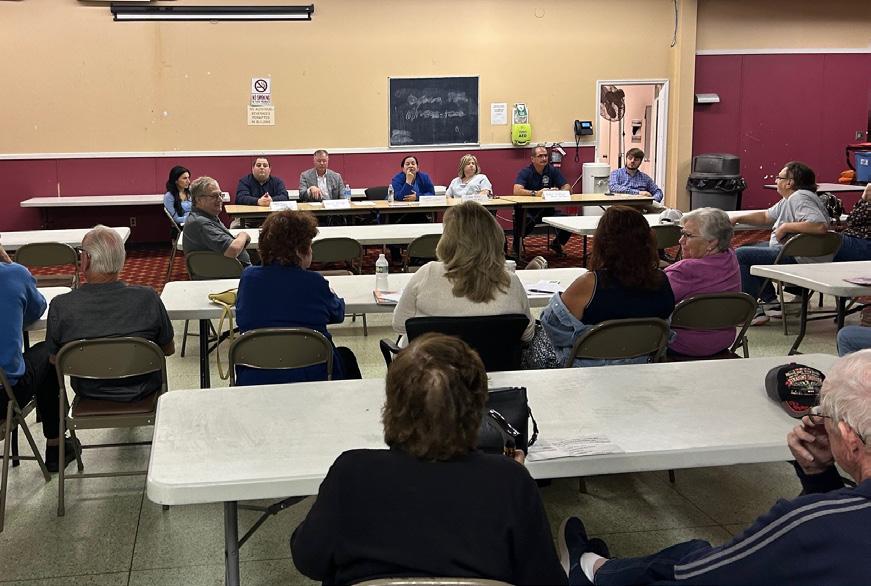

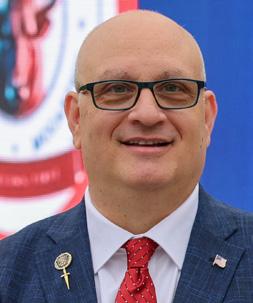
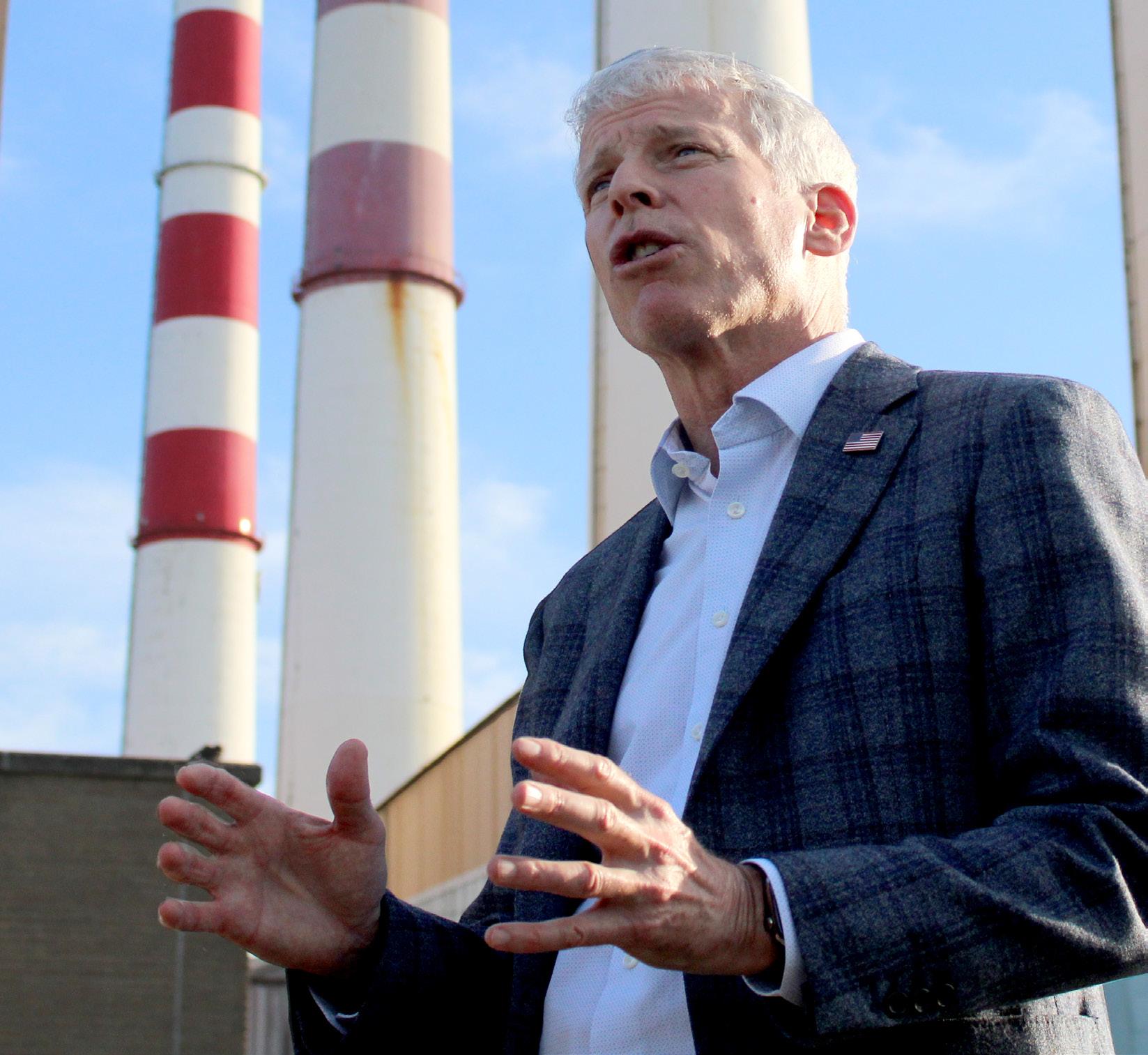
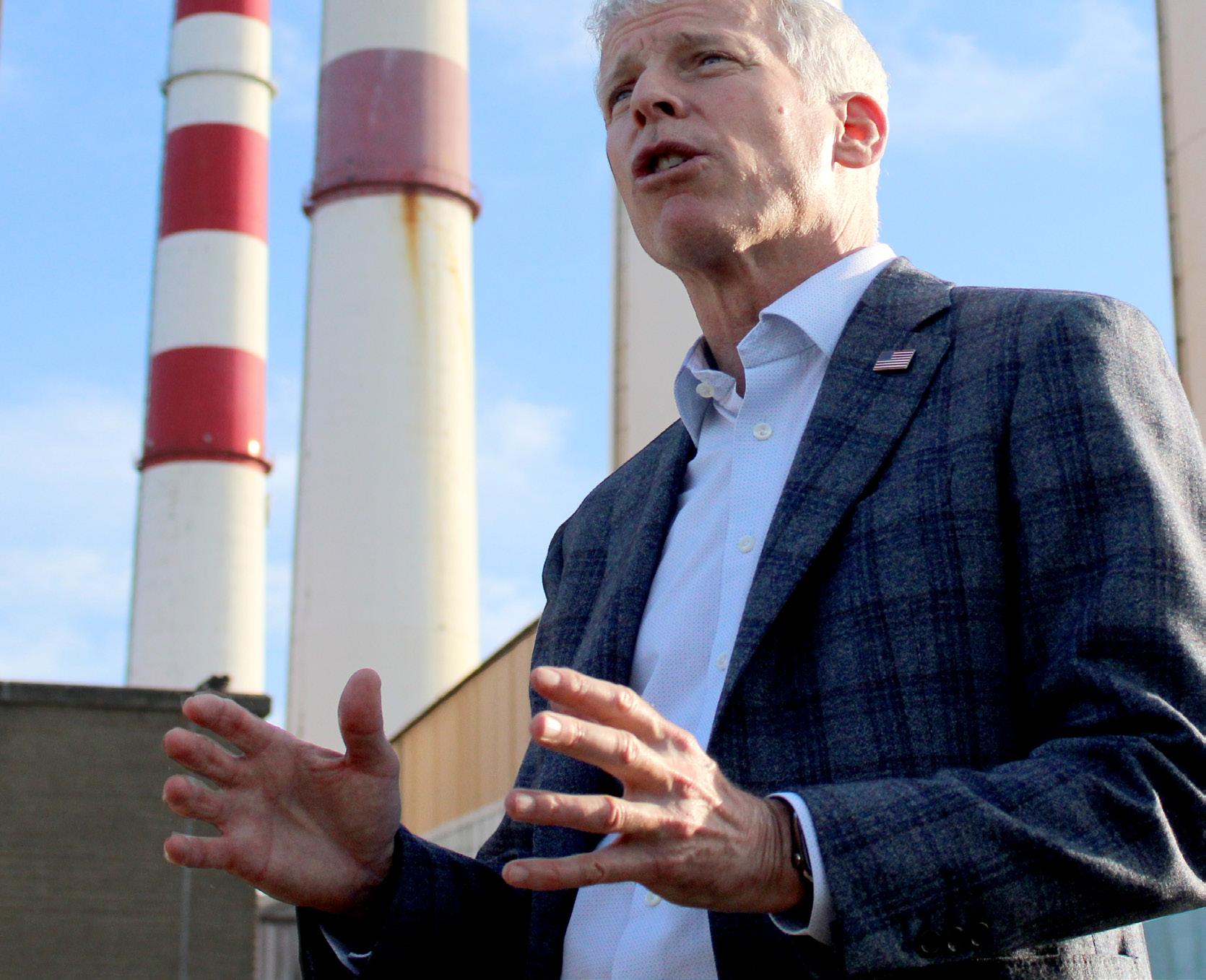



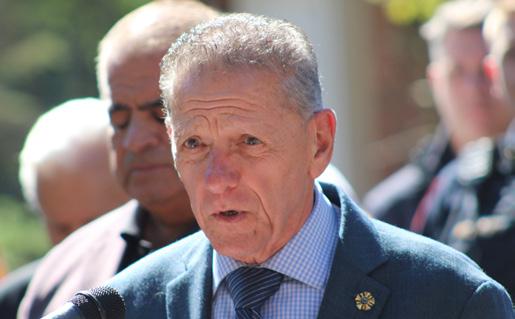
Secretary Chris Wright at the Northport Power Plant on Tuesday (Credit - Matt Meduri)
Port Jefferson
Summer Farmers Market at Harborfront Park
Every Saturday and Sunday, May 18-November 28
9:00 AM to 2:00 PM
Islip Farmers Market at Town Hall
Every Saturday June 7 - November 22
7:00 AM to 12:00 PM
Goatman’s Haunted House


MPMS Historical Society Country Fair in Miller Place
October 4, 12:00 PM to 5:00 PM
Commack Day
October 5, 11:00 AM to 4:00 PM
Celebrate Huntington Fall Festival October 10-13, Times vary
Great Pumpkin Dash Trail 5K at



PUBLISHER
Raheem Soto
EDITOR-IN-CHIEF
Matt Meduri
ART PRODUCTION MANAGER
Sergio A. Fabbri
GRAPHIC DESIGN
Colin Herr
CONTRIBUTORS
PJ Balzer
Ashley Pavlakis
Madison Warren
DISTRIBUTION & CIRCULATION MANAGER
Tim Walz
DELIVERY PERSONNEL
PJ Balzer
Joe Cuminale



OFFICE MANAGER & ACCOUNTS
RECEIVABLE
Kim Revere
PROOFREADER
Giavanna Rudilosso
SOCIAL MEDIA
Madison Warren
Library News
WHERE TO FIND OUR PAPER
COMMACK
Bagel Chalet
Bagel Toasterie (Mayfair Shopping Center)
Candlelight Diner
HAUPPAUGE
Hauppauge Palace • Shop Rite (Smithtown Bypass)
KINGS PARK
3 Sons Deli • Bagel City Company
Kings Park Card Shop
Kings Park Manor • Linda’s Pizza
LIRR Kings Park Train Station Park Bakery • Raleigh Poultry Farm
LAKE GROVE
Lake Grove Village Hall
RONKONKOMA
718 Slice Pizzeria (719 Hawkins Ave)
SMITHTOWN
American Legion
Hot Bagels • LIRR Smithtown Train Station
Maureen’s Kitchen • Millennium Diner
Smithtown Bagels
Smithtown Seniors Center
Smithtown Town Hall Stop & Shop • Sweetwaters
ST. JAMES
50% Cards Store (Lake Avenue)
7 Eleven (356 Lake Avenue) Lake Ave Deli
LIRR St. James Train Station
HAUPPAUGE:
Blindfolded Cookie Competition For Teens- October 3, 12:00 PM to 4:00 PM
Baby and Me- October 7, 10:00 AM to 10:30 AM
COMMACK:
Toddlers TangoOctober 2, 11:00 AM
NESCONSET:
Bingo Night for AdultsOctober 3, 7:00 PM to 8:00 PM
KINGS PARK:
Teen Detectives SocietyOctober 7, 7:00 PM to 8:00 PM
Nursery RhymesOctober 11, 10:30 AM to 11:00 AM
SACHEM:
DIY Scarecrow WorkshopOctober 4, 1:00 PM to 3:00 PM Writers WorkshopOctober 14, 6:45 PM to 8:45 PM
AT THE SACHEM BUILDING





Suffolk Matters
Energy Secretary Chris Wright Visits Northport Power Station
On November 16, 2024, then-Presidentelect Trump nominated Wright to lead the Energy Department. The U.S. Senate Committee on Energy and Natural Resources voted 15-6 to advance his nomination to the full Senate. He was confirmed on February 3 by a 59-38 vote, with seven Democrats and one Independent who caucuses with the Democrats, joining 51 Republicans to confirm him. Fellow Coloradans Senators John Hickenlooper (D) and Michael Bennet (D) were among those eight crossover votes.
“I’m passionate about energy. It enables everything we do in our lives, our business, and our hobbies. It’s the infrastructure of life,” Wright told the press on Tuesday afternoon in Northport. “President Trump got elected because Americans were frustrated by rising energy prices. New York and New England have among the highest energy prices in the country - 50% to 100% higher than the national average.”

Wright (pictured right) added that it isn’t “bad luck” that New York has this problem, but an “accumulation of political decisions.” He stated, however, that he is “optimistic” about “changing trajectories”, and that these problems are “fixable.”
“When you have wildly high prices, it means industry leaves and low-income people struggle to pay their bills. I’ve never seen the upside of it,” said Wright. “One of the biggest drivers of the last twenty years has been a misunderstanding of climate change.”
Wright clarified that “climate change is a real physical phenomenon”, and that he’s “engaged with the issue for twenty years.”
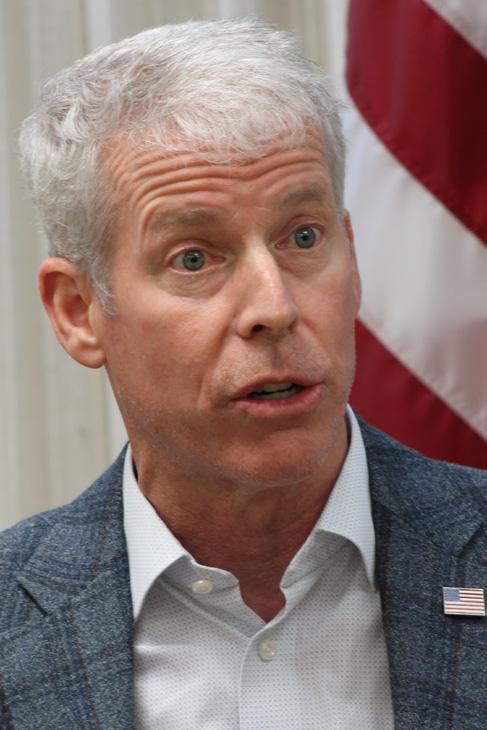
“The United States is by far the biggest reducer of greenhouse gas emissions of any country on Earth,” said Wright, adding that the net-zero emissions goals by 2050 has been a “drum that’s been beaten and justified all sorts of laws.”
Wright said that there is a “0.0%” chance that the world will hit net-zero by 2050, but called the effort “justified”, nonetheless. He outlined three problems that have arisen from adherence to this goal.
“Energy has been more expensive everywhere,” he said, adding that the leaders of the net-zero movement, the United Kingdom, Germany, Denmark, and Canada, only stand to “elevate energy prices” and “impoverish” their citizens the “longer and more aggressively” the goal is pursued.
Secondly, Wright said that “deindustrialization” is another byproduct of the ethos.
“California, the economic engine of our country, the birthplace of semiconductor and defense manufacturing - a state that had everything going for it - made their energy prices so expensive that the industry just left,” said Wright. He said that when industry leaves, it typically goes to China.
“That’s not emissions reduction; that’s just the moving of emissions. But the jobs and economic opportunities move with it.”
Thirdly and finally, Wright said the standard of living becomes stunted, as most citizens, especially low-income households, “don’t have the economic prosperity and progress they wish they had.”
“Blue-collar jobs, lower-wage jobs tend to be energy-intensive jobs. California was an expert at moving all of those jobs out of its state. How does California today have the highest adjusted poverty rate of any state in the country? Bad energy policies are central to that evolution of that state,” said Wright. “The answer is better political decisions and leadership.”
Wright called for more energy infrastructure across New York, namely via natural gas. He said that “well over” 40% of all electricity in the U.S. is generated through natural gas - 50% in New York. The switch from burning oil to burning natural gas nets two benefits, according to Wright: lower costs and cleaner air.
“I haven’t found anyone who’s opposed to either,” said Wright.
“The goal of the Trump Administration, and my goal personally in the Department of Energy is how we can help every state lower its cost of energy, clean the air for our citizens, and provide expanded economic opportunity.”
Wright called New York’s Climate Leadership and Community Protection Act (CLCPA) “totally nuts.”
“That ban on natural gas means more gas will be burnt [from other states], and the cost of heating in that home will go up from two to five times,” said Wright. “The multiplier is about three-and-a-half times more expensive to heat with electric instead of heating with natural gas directly at the point.”
Wright said that he met with Governor Kathy Hochul (D) early in his tenure and has had “many productive dialogues” with her about the NESE and Constitution natural gas pipelines, which have been stalled by Albany.
“These are two pre-planned projects that will lower energy costs and clean the air. That shouldn’t be a hard sell, but yet politicians in New York stopped them,” said Wright. “Both pipelines would be massively helpful in pursuing those goals.”
The Northport Power Station is about sixty years old. Wright said that the federal government is looking to alter the “regulatory environment” for investments to be made in existing power facilities. Funding from the Department of Energy could play a part in that. Wright added that the department can match funds from corporate players for better return.
“We are in constant negotiations and dialogues with people right now about that,” said Wright. “A lot of the money allocated under the Biden Administration was to encourage business and utilities to do the opposite, to spend money to make electricity more expensive and less reliable, but some of those funds are still available to better the system.”
Of updating existing infrastructure, Wright said it comes down to upgrading them with more modern equipment and monitoring plants’ yearly peak outputs to gauge regional demand.
Wright said that he’s “all in” on nuclear - the second-largest source of power in the U.S. behind natural gas. However, he stressed that specific assets should be adjudicated by local control. He said that if state and local governments wished to pursue nuclear, he would do “everything” he could to help them.
Coal power plants are the third-largest source of U.S. energy after natural gas and nuclear, accounting for 16% of total energy production. Wright said that the Biden Administration planned to close “100 gigawatts of coal and natural gas power plants.”
“Totally insane,” said Wright. “To lead the race in AI and re-industrialize our country, we need to add that 100 gigawatts of capacity, especially when the wind’s not blowing and the sun’s not shining.”
Wright was pressed on his stances on climate change when overlaid with his past as a fossil fuel executive.
“I helped start the American shale gas revolution, the largest driver of reduced greenhouse gas emissions in the U.S. by far. Roughly 60% has been natural gas displacing coal in the power sector,” said Wright, adding that if climate change was a big of a problem as presented in most cases, it would have been “awesome for his business.”
“Since fossil fuels came into the world, human life expectancy has more than doubled. Wealth per person around the world has grown about sixteen-fold,” he said, adding that, despite the benefits, the fuels have “increased atmospheric CO2 by 50%, absorbed infrared radiation, which is contributing to the warming, and contributing to the sea level rise that was already underway before hydrocarbons.”
Regarding wind energy, Wright called its history a “train wreck”, and that Denmark, Germany, and the United Kingdom, which have some of the largest offshore wind farms, have the most “expensive electricity prices in the world.”
Photo credit - Matt Meduri
By Matt Meduri
‘We Need a Plan, Not a Ban!’ Mattera Leads Rally Against NYS Energy Mandates
Senator Mario Mattera (R-St. James), Ranking Member on the Energy and Telecommunications Committee, has long led the fight against what he calls “unrealistic” energy mandates from New York State.
Chief among his concerns is that of the Climate Leadership and Community Protection Act (CLCPA), which has the goal of reducing emissions to 40% below 1990 levels by 2030 - 85% below 1990 levels by 2050. The State aims to get 70% of electricity from renewable sources; by 2040, all electricity from carbon-free sources like wind and solar.
The CLCPA led the All-Electric Buildings Act, which bans natural gas hookups and other fossil fuels in most new construction. The moratorium kicks in on December 31, 2025, for building seven stories or less in height. It will apply to all buildings by January 2029.
Mattera led a rally and press conference with a host of union laborers at Stony Brook University on Monday afternoon.
“Goals are good; mandates are bad,” said Mattera. “We need a plan, not a ban!”
global emissions, as opposed to China, which represents 30%.
“China has a thousand coal plants and they’re building more each and every week.”
Senator Rhoads, Ranking Member on the Senate Labor Committee, took issue with overall spending, saying that New York is “number-one in the nation in both taxes and spending, the second-worst business climate according to Forbes, and has the fourth-highest cost of living in the entire country.”

He called on Governor Kathy Hochul (D) to repeal the mandates of the CLCPA, adding that “rates are already going up over 100% in areas.” He acknowledged State Comptroller Tom DiNapoli’s (D-Great Neck Plaza) recent audit showing that the state cannot reach the mandate.
Mattera also called for the State to approve the NESE and Constitution pipelines, which would fast-track natural gas production and remove carbonemitting trucks from the highways that carry frozen natural gas from Pennsylvania. Mattera said that “seven pounds of CO2” are emitted “per mile per truck.”
“We need to avoid putting all our eggs in one basket by pushing all-electric when the State infrastructure is not ready. We need to examine every single source of energy, including retooling our existing power plants with carbon capture to protect our environment,” said Mattera. “We need green hydrogen and thermal energy.”
Mattera also took chagrin with the “bubble” that’s seemingly around New York, as the neighboring states all use fossil fuels, which help New York maintain its grid.
“We need to be self-sufficient and for common sense to guide our future, not political agendas.”
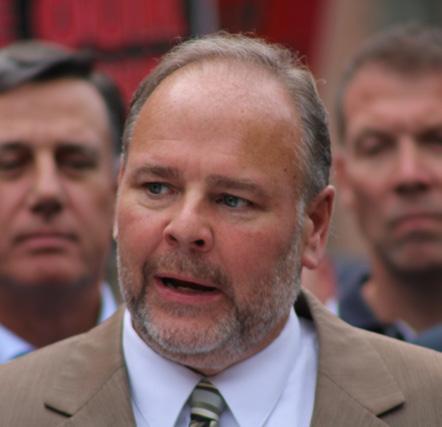
Mattera was joined by Senator Anthony Palumbo (R-New Suffolk), Steve Rhoads (R-Bellmore), Assemblywoman Jodi Giglio (R-Baiting Hollow), and Assemblyman Phil Palmesano (R-Corning) (pictured left)
Stony Brook was Palmesano’s sixth and final stop on his statewide energy tour; Palmesano serves as Ranking Member on the Assembly Energy Committee.
“Governor Hochul is quick to blame the utilities for this, but fails to look in the mirror,” said Palmesano.
“The draft energy plan has an all-of-the-above approach; continuing natural gas, nuclear, and fuel diversity.”
Palmesano mentioned a recent poll that found 71% of New Yorkers oppose a natural gas ban, including 76% of Independents. The balance between renewable and natural gas galvanized 74% of Democrats.
“New Yorkers want energy choice. Unfortunately, Governor Hochul and the Democrats in Albany disregard affordability, reliability, feasibility, safety, energy choice, fuel diversity, and, certainly, the impact on local labor.”
60% of New Yorkers heat their homes with natural gas and 40% of power generation comes from natural gas. Palmesano said that the current trajectory will “jeopardize the reliability of the grid, leading to dangerous and deadly blackouts, and continue our nation-leading out-migration of New York families, farmers, small businesses, and manufacturers.”
He added that in July 2023, the State Department of Public Service (PSC) approved $43 billion in future ratepayer increases to cover the green-energy mandates, with a quarter-trillion-dollar estimate for full implementation. The cap-and-invest plan would increase prices at the pump by 62 cents per gallon.
“The residential price of electricity in 2019 before the CLCPA was $0.17 per kilowatt hour (kWh),” said Palmesano. “Today, it is more than $0.25 per kWh40% higher than the national average. That’s unsustainable.”
As far as global emissions, Palmesano said that New York accounts for 0.4% of
Rhoads echoed the sentiments of “pumping the brakes” on solar and wind until a plan is developed.
“If you force homeowners to transition their natural gas stoves to electric, it’s an anticipated cost of $30,000-$40,000. Where does that money come from?” said Rhoads.
Suffolk County Executive Ed Romaine (R-Center Moriches) (pictured left) spoke in favor of solar, but also a balance to not just rely on one source of energy.
“If our energy gets out of control in terms of cost, we’re going to see more people leave the state. I believe in all-of-the-above,” said Romaine. Babylon Town Supervisor Rich Schaffer (D-North Babylon) wore his hat as the representative for Plumbing Contractors Association of Long Island, voicing support for the two natural gas pipelines.
“We need to make sure we have affordable, reliable options, including natural gas, solar, wind, and nuclear,” said Schaffer. “You’ll have both our support on the field as well as our financial support in the courtroom to make sure that we get a fair shake here with energy options for all.”
Mike Florio, CEO of the Long Island Builders Institute, said that these mandates would “layer more cost on top of the price of a home.”
“You’re pricing more and more people out of that market and making it harder for them to stay here,” said Florio. “We’ve found through polls that 49% of people don’t know that there’s an impending ban on natural gas and propane coming up. They’re going to be confused when they go to buy a home and find they have no choice and that it has to be all-electric.”
Eric Alexander, Executive Director for Vision Long Island, said that small businesses, particularly in downtowns, “can’t afford another bill.”
Rich Ellenbogen, an energy expert and Cornell alumnus, brought more statistics to the table. His factory in Westchester County has two solar arrays, along with a plan to decarbonize his business thirty years ago. His factory generates 75% of its electricity onsite using a combination of solar and highefficiency gas generation.
“We have a carbon footprint 30-40% lower than ConEd’s,” said Ellenbogen. “I’m not pro-anything; I’m pro-what works. My home is geothermal; my bills have gone down 5% over the last two years. My daughter lives in the ConEd service area; her bills have gone up 14%.”
Ellenbogen predicted the blackouts in Spain and Portugal when they embraced energy goals similar to New York. He shared that the downstate grid in New York is 95% fossil fuel-driven, with just 5% renewable-driven.
“We’re operating at only 2,000 megawatts above the blackout line. With our aging power plans, they could fail at any given moment,” said Ellenbogen, sourcing numbers from the State. “LIPA wanted to retool the power plants at Northport, Port Jefferson, and Barrett in 2015. It would have greatly improved the environments around these plants and reduced emissions. Someone at the State said ‘no.’ Long Island doesn’t have the wind speeds during the summer to support the peak air conditioning usage.”
“Spain and Portugal had to rely on nuclear plants from France to restart. I’ve been warning people about this here since 2019.”
Suffolk County Comptroller John Kennedy (R-Nesconset) (pictured right), joined by Suffolk County Legislator Chad Lennon (C-Rocky Point) and a representative of Congressman Nick LaLota (R-Amityville), said that the laborers who would be affected by these goals would cut off a vital pathway for the middle class on Long Island.
“Utilities have become neglectful. The people of Suffolk County have paid $18 million for National Grid, $235 million for PSE&G,” said Kennedy.
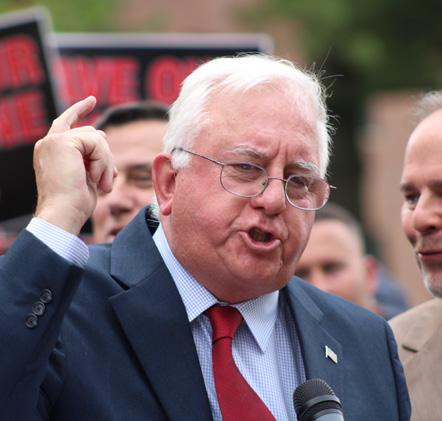
NYS Puts the Generator Before the Horse
New York’s energy policies are nothing short of backwards. Let us be clear: there is absolutely nothing wrong with pursuing clean energy initiatives. We’re all for it, but as long as it makes sense.
That’s why the current policies, we find, are pathological at worst, and overly-virtuous at best. The proverbial generator is being put before the horse, especially as it relates to the Climate Leadership and Community Protection Act (CLCPA).
Setting goals is important, but trying to shoehorn our resources and citizenry into meeting those goals for the sake of itself is entirely regressive, not progressive.
The natural gas moratorium for new buildings under seven stories in height is set to kick in on December 31 this year. The wait is over and it will likely further exacerbate already-rising energy costs and the oppressive housing market. It will apply to all new buildings by 2029.
Senator Mario Mattera (R-St. James), no stranger to energy production, is correct on this issue. New York needs to entertain an all-of-the-above approach. A healthy mix of all energy sources is needed to diversify production and cool the various markets, all of which are invariably linked to energy costs. Phasing out fossil fuels in favor of renewable energy is a laudable goal, one of which we approve, but it needs to be done gradually, not in the “ready, fire, aim” method that Albany has applied. How are we supposed to finance these expensive and even experimental forms of energy production while New Yorkers continue to flee the state and while Executive Budgets continue
to balloon year-over-year?
This is what happens when people with actual skin in the game and experts with a boots-on-the-ground perspective aren’t consulted, and instead, academics and lobbyists are instead taken as the oracles on New York’s energy future. We can have them at the table as well, but we can’t just sit in an echo chamber one or the other. Even Comptroller Tom DiNapoli (D-Great Neck Plaza) hasn’t ignored the energy deficit, another win for a statewide official who is willing to call balls and strikes.
Moreover, the NESE and Constitution Pipelines need to come online, and we’re hearing rumblings that Governor Kathy Hochul (D) is now warm to the idea - an interesting inflection point as she mounts what will appear to be the most contentious gubernatorial race in this state since 1994. Not only would it expedite natural gas to New York, but also bypass the costly and, at times, dangerous process of refining it, while relieving our roadways from damaging and polluting trucks that spew seven pounds of CO2 per mile per truck.
It’s interesting to hear that the so-called environmentalists won’t give credence to that particularly startling detail, although we also hear from our sources that even that point is now being considered.
It seems that Albany is trying to strangle taxpayers at every end, and while the energy bill continues to be one of the most oppressive in the nation, it affects all other markets. Experimentation is fine, but not on our dime to this extent.
We need a plan, not a ban, indeed.
Scrap the HOV Lane While We’re at It…
The federal government, as of October 1, has not renewed the Clean Pass Act, which was designed to incentivize electric and/or hybrid vehicles to ride in the High Occupancy Vehicle (HOV) lane regardless of occupancy.
We’re glad to see that ridiculous program end.
First of all, if electric and hybrid vehicles get better fuel economy and are responsible for fewer emissions, wouldn’t it have made sense for them to sit in traffic while the gas-guzzlers could get better mileage and emit less?
Secondly, in places like Long Island, every highway is a virtual parking lot anyway - moot point, in our opinion.
Incentivizing cleaner vehicles is fine, but it was backwards logic that made this program what it was. Moreover, the Clean Pass Act allowed such vehicles into a lane that was designed to encourage less cars on the road, not more. The risks and drawbacks of electric and hybrid vehicles - such as utterly expensive repairs and battery replacements and the dangers of unquenchable lithium fires - went under the radar, all just so you could maybe have the chance of sitting in less traffic.
Besides, every Prius we’ve ever seen in the HOV lane seemed insistent
on going under the speed limit on the Expressway. And since the HOV lane should not be entered and exited freely - although many do so anyway - it made for an infuriating experience that only added to roadway congestion.
Now, the HOV lane is back on for its original purpose, while the Prius and Tesla drivers are now free to camp the left lane and cause further aggravation there.
But the HOV Lane should just be scrapped altogether. At this point, solo drivers are a dime a dozen in that lane, and drivers tend to treat it like a fourth lane anyway. We’re not fans of adding more lanes to alleviate traffic problems; in the long run, it usually makes it worse.
But the lane is already there and is being treated as a regular lane. We think the HOV Lane should just be scrapped altogether. The drivers have already made up their minds and it’s becoming more difficult for those laws to be enforced.
Even if that’s not on the horizon, we’re glad that the Clean Pass Act is over with. Let’s get back to properly and logically incentivizing new forms of travel.
Celebrate Your Losses, but on Merit
Former Vice President Kamala Harris (D-CA) has been barnstorming the country asserting that last year’s presidential election was the closest “this century.”
First of all, we understand the “this century” comment for the sake of brevity, but we’ve only had seven elections “this century” - an iota of time in the overall political history of this country.
She’s also patently false when it comes to that claim anyway. The 2000 election was by far the closest election not just this century, but it’s one of the closest in history - both in terms of the Electoral College and popular vote.
The 2024 election was close; we’re not denying that. But Donald Trump’s (R-FL) 312 electoral votes is the third-highest count for any presidential candidate “this century”, and the best for any Republican “this century.” Moreover, Trump won the popular vote - which many thought was impossible - by 1.5%, a thin margin, but also not razor-thin. Check our Civics 101 column on Page 14 for a more in-depth look at the statistics.
Harris’ underperformance was also shocking. Having New York lead the nation in rightward swings - 10.5% - New Jersey being a single-digit state, and massive enthusiasm gaps across the bluest states - Illinois, California, Rhode Island, and Hawaii, to name a few - isn’t exactly helping the “closest election
this century” argument. Even Boston led Massachusetts, one of the bluest states in the country, in rightward swings on the county level there.
Therefore, celebrating losses can be done within the right context, but it’s generally not the best idea. Not only does one sacrifice any credibility in being able to pick up the pieces and improve, but it’s also entirely disingenuous when the data is ripe for the picking.
It goes back to the classic argument against “participation trophies”, or a little league team going to Pizza Hut after a game they just lost. Not only does it not incentivize overperformance, course correction, and personal improvement, but it doesn’t track logically. Simply saying that you did a good job doesn’t make it so, no matter how many times you say it.
The “on merit” portion of this headline relates to how elections can be interpreted. A solidly safe state or district for one party that suddenly becomes competitive is certainly something to be celebrated. But what’s being celebrated is the progress, not the loss itself. Harris has virtually no progress to celebrate from this last election.
The bottom line, celebrate your losses genuinely and when tangible progress has been made, not to comfort yourself after a loss or underperformance, especially a historic one at that.
By Congressman Nick LaLota
Op-Ed Should Shutdowns Be Used for Partisan Leverage?
For years, leaders in both parties have acknowledged that government shutdowns are reckless, put millions at risk, and waste valuable time Congress should spend doing the people’s work. They were right. Using a shutdown as a bargaining chip hurts ordinary Americans and undermines our national security.
That’s why in both 2023 and 2024—despite strong disagreements with President Biden’s (D-DE) border policies—I refused to use a shutdown to fight that battle. Along with other responsible Republicans, I voted to keep the government open because we knew who would suffer if we didn’t: our troops, our Veterans, and the 31,000 federal employees on Long Island who provide critical services. Policy fights belong in the legislative and electoral arenas—not on the backs of families and federal workers.
Now, in 2025, some in Congress are taking the opposite approach. Last week, Democrats rejected a clean, 52-day funding bill that carried no partisan riders and simply extended existing Biden-era spending. With 60 votes required in the Senate and only 53 Republican Senators, both parties must act responsibly to keep the government funded. Instead, Democratic leaders like Chuck Schumer (D-NY) have admitted they will block status-quo funding until Republicans agree to restore healthcare subsidies for non-citizens.
The consequences for Long Island would be severe. At Brookhaven National Lab, 3,000 scientists and engineers could see their work disrupted.
By Joseph Furnari
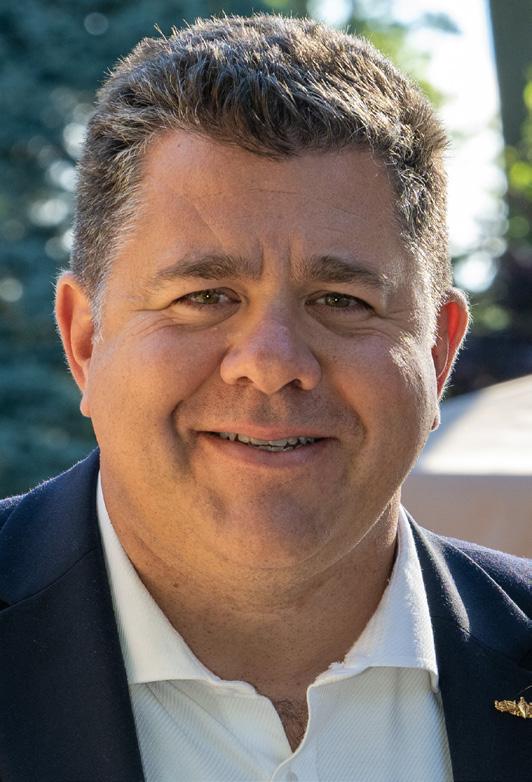
A shutdown would risk leaving troops, air traffic controllers, and tens of thousands of federal workers without pay—creating real hardship for families and delays in air travel. Services at the Northport VA Medical Center, relied on by thousands of Veterans, could be interrupted. Seniors might still receive Social Security checks, but they would face delays in local services, threats to nutrition programs, and weaker oversight of nursing homes.
The American people deserve better. Shutdowns should never be used as a partisan tool.
Congressman Nick LaLota (R-Amityville) has represented New York’s First Congressional District since 2023. The First District includes the entireties of the towns of East Hampton, Riverhead, Shelter Island, Smithtown, Southampton, and Southold, as well as most of Huntington, and the northern half and eastern parts of Brookhaven.
The First District office is located at 515 Hauppauge Road, Suite 3B, in Hauppauge, and can be reached at 631-289-1097. Mobile office hours are held on Thursdays from 1:00p.m. to 5:00p.m. at 109 King Road in Rocky Point.
Library of Things
Today, when most people think of a library, the image that comes to mind is often a quiet space filled with shelves of books, racks of magazines, a handful of computers tucked away in the corner, and the familiar “shhh” from a librarian keeping the peace. While that picture may have been true decades ago, it no longer tells the whole story. Public libraries across the country have been steadily evolving into dynamic community hubs that are every bit as much about people and experiences as they are about books.
Through what’s known as the “Library of Things,” patrons can now borrow an incredible variety of non-traditional items that make everyday life more accessible, affordable, and fun. Some of the most borrowed items include wireless hotspots for families who need reliable internet access in a pinch or when they are traveling, museum passes that open doors to cultural institutions across Long Island and beyond, and even seed packets that support gardening and sustainability right at home.
Libraries are also lending out fishing poles for a day on the water and tech and maker tools like sewing machines, GoPro cameras for the adventurous types, Cricut machines to create specialized items for that special event or even help you start that business, microscopes for the future scientist, karaoke systems for the at-home Taylor Swifts, and even ukuleles. These items may surprise many, but they highlight just how responsive our libraries are to the continuous evolving needs of the communities they serve.
What’s remarkable about all of this is how libraries are adapting to
the evolving needs of the communities they serve. They aren’t just keeping up with the time they’re actively shaping the way people connect, learn, and create. By offering these resources for free, libraries remove financial barriers and make opportunities available to everyone, no matter their income or background.

As a longtime library supporter, I believe this expansion beyond books not only strengthens community connections but also empowers people to discover new passions and possibilities. The next time you step into your local library, don’t just think of it as a place to read, see it as a place to explore, create, and experience all that your community has to offer. That’s the true mission of today’s libraries and it’s only growing stronger.
Discover. Learn. Belong.
Joseph Furnari has served as the Clerk of the Mastic-MorichesShirley Community Library since 2019. He has lived in the Tri-Hamlet area for more of his life and is a graduate of the William Floyd School District.
Letter to the Editor: Inspired
Dear Editor,
I was inspired by Brianne Wakefield’s article on Charlie Kirk’s martyrdom. Our country was molded into what it is today by various influences that have taken us down a path that needs adjustment. As we make these adjustments, going forward consider that every area of society needs adjusting and can be influenced by the same kind of listening and being knowledgeable.
When the USA became the Leader coming out of World War II, the artists at the time realized that they needed a new art and out of that came “Abstract Expressionism”, the first art movement birthed in the USA.
So, I said that to say, if this is an awakening, let it spring with new ideas and life into every area of society to the glory of God.
Inspired, Fred Baumbach
Comprehensive Spine Care in Smithtown
New Center for Spine and Orthopaedics at St. Catherine of Siena Hospital
St. Catherine of Siena Hospital in Smithtown has created a new Center for Spine and Orthopaedics, welcoming Long Island Spine Specialists, PC, a team of five orthopedic spinal surgeons and three physiatrists specializing in interventional pain management.
With this team’s clinical experience in all types of spinal conditions, including chronic and injury-related conditions, patients now have access to expert spine and pain care tailored to their needs.
Spine Surgery
Thomas Dowling Jr., MD
Sushil Basra, MD
Thomas Dowling III, MD
Christopher Frendo, DO
Laurence Mermelstein, MD Interventional Pain Management
Arjang Abbasi, DO
Neal Frauwirth, MD
Joseph Sanelli, DO

Thursday, October 2, 2025
National, State, and Local Temperature Checks
By Matt Meduri
National
Several special elections have been held in the last couple weeks, including one that restores one seat in the thinly-divided U.S. House.
Representative-elect Adelita Grijalva (D-AZ) (pictured right) won a September 23 special election in AZ-07, which was vacated after her father, Congressman Raúl Grijalva (DAZ), passed in March. AZ-07 is a large district that spans nearly the entire Mexican border with Arizona. It includes parts of the Phoenix Metro area, the western third of Tucson, and parts of Yuma and Nogales. It also contains seven sovereign Native American nations.

Adelita Grijalva, a former member of the Pima County Board of Supervisors, overperformed significantly in last week’s special election, defeating painting contractor and 2024 nominee Daniel Butierez (R-AZ) 68.95% to 29.43% - a 39.52-point margin of victory. For comparison, former Vice President Kamala Harris (D-CA) won this district by a 22-point margin last year. The late Grijalva won by 26.8% in the 2024 general election.
With the seat filled, only two vacancies remain in the House - the Houston-based TX-18 and the western Nashville-based TN07. Both are widely expected to be filled by a Democrat and a Republican, respectively.
Meanwhile, Democrats also overperformed in a Georgia State Senate special election runoff last week, in which Jason Dickerson (R) defeated Debra Shigley (D) by 23%, a sharp decline from Dickerson’s predecessor’s win by about 40% in 2024. President Donald Trump (R-FL) carried about two-thirds of the vote in this Atlanta-based district, which contains suburbs and rural communities north of the city.
Finally, however, Republicans have overperformed in their first special election this year. Although they did not win the special election for Minnesota State House 34B, they made up some significant ground in one of the most leftward-trending parts of the country.
The seat was vacated due to the shocking political assassination of then-House Speaker Melissa Hortman (D) and her husband in June. Hortman had been re-elected in 2024 by about 34%. The Minneapolis-based seat went to Xp Lee (D) by about 22% over Ruth Bittner (R).
The Minnesota House, as a result of this election, remains under a powersharing agreement between the parties. The chamber is tied at 67-67, with Lisa Demuth (pictured right) (R-MN) serving as Speaker. The chamber will go to a formal power agreement when either party clinches 68 seats in the state’s lower chamber.
City. The city is currently enclosed in the solidly-blue MO-05, while the new map dilutes its influence between MO-04 and MO-05, with the latter stretching from the Kansas border across the state to include Jefferson City. Additionally, the GOP shored the suburban St. Louis-based MO-02, a competitive seat that Democrats could realistically contend.
The new gerrymander gives Republicans an extra seat in the House, as the new MO-05 is highly likely to elect a Republican. The plan was initially supported and endorsed by President Donald Trump (R-FL). However, the state must now survive an initiative from a group called People Not Politicians (PNP).
PNP says that it plans to collect more than 100,000 signatures in six of eight congressional districts across Missouri to place the new map on the back of voters’ ballots this year. If it meets its quota within ninety days - December 11 - the map cannot come online unless a majority of Missourians give it the green flag.
The arms race continues next door to the Sunflower State, where Topeka Republicans are teasing a special session to axe another blue district that contains the other half of Kansas City.
a red-leaning seat at the moment.
Democrats won’t get a leg up in the courts in Arkansas, Florida, and South Carolina, as courts have ruled that the states are not racially gerrymandered. Democrats hope to get another shot in Wisconsin, with the State Supreme Court requesting briefs on the case, as the first lawsuit on partisan gerrymandering was dismissed in June.
Courts have ruled, however, that GOPdrawn maps in Utah and Ohio will be redrawn ahead of 2026. The Utah situation could produce a blue seat around Salt Lake City, as the Utah Supreme Court found that the state legislature circumvented a citizen-passed redistricting commission by carving up Salt Lake City in all four of the state’s congressional districts. In Ohio, a legal failsafe requires a new map. A citizen-passed amendment to the state constitution in 2018 required legislative maps to be supported bipartisanly. Without such support, the mechanism in place requires a new map to be drawn this year.
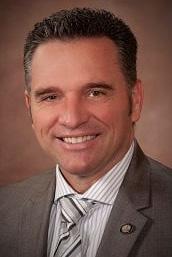
Kansas Senate President Ty Masterson (R) (pictured above right) has said that legislators are “working out details” for a special session that could occur in November. Republicans hold a supermajority in both chambers in the Kansas Legislature, meaning they would be able to not only call themselves into session, but override a likely gubernatorial veto from term-limited Governor Laura Kelly (D-KS).
Republicans currently have three of four Kansas seats. The lone seat they do not possess is KS-03, currently held by Congresswoman Sharice Davids. Davids flipped a more compact version of the seat in the 2018 blue wave and held it by a convincing margin in 2020. The district was drawn to be more favorable to Republicans, but Davids held on in both 2022 and 2024.
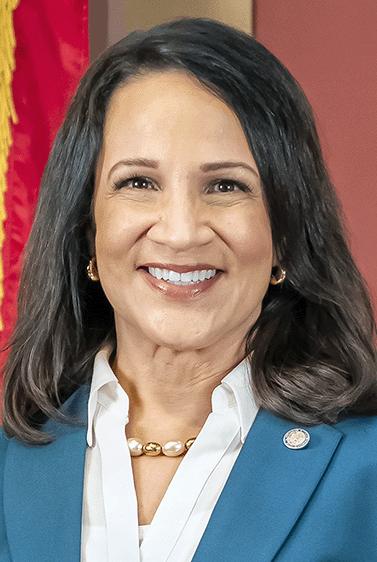
In the redistricting arms race, the GOP has gotten one seat closer to padding their tenuous House majority.
Governor Mike Kehoe (R-MO) on Sunday signed into law a new map that cracks Kansas
Meanwhile, Indiana Republicans and Maryland Democrats are greasing the skids for their own gerrymanders by the end of this year. Republicans have a 7-2 advantage in Indiana, and lawmakers have reportedly met with White House officials on targeting the Gary-based IN-01. In Maryland, Democrats are reportedly considering legislation for the upcoming 2026 session to axe the lone Republican seat in the Old Line State. MD-01 was previously carved up for Democrats in their regular redistricting cycle earlier this year, but the map was overturned as a gerrymander. MD-01 remains
proud to say that we took that victory four years ago and turned it into action -- making this city better for those who had been failed by government.”
Adams cited the NYC Campaign Finance Board’s (CFB) decision to deny him millions in matching campaign funds as a primary reason for his suspension. The board denied his funds in August on the grounds that his campaign had not submitted the required paperwork and that they have reason to believe his campaign violated the law due to the aforementioned bribery allegations.
U.S. Judge for the Eastern District of New York Nicholas Garaufis wrote in his decision that the CFB was within their rights to deny Adams’ funds based on incomplete paperwork, but not on the grounds of the allegations, as Adams was never formally convicted.
The CFB awarded Mamdani about $1.7 million and Sliwa $1.9 million in August.
State
The tumultuous New York City mayoral race becomes clearer, albeit slightly.
Incumbent Mayor Eric Adams (D-Brooklyn) has exited the race. The shake-up now brings the race to three candidates: Assemblyman Zohran Mamdani (D-Astoria) - who is running as a selfavowed Democratic Socialist - former Governor Andrew Cuomo (D-Sutton Place) - who resigned in disgrace in 2021and Curtis Sliwa (R-Upper East Side) - founder of the Guardian Angels.
Adams dropped out of the race on Sunday likely due to his beleaguered poll numbers that put him fourth out of the four major candidates. Even before his federal indictment, his approval rating was at an abysmal 28%, according to a Quinnipiac University poll from December 2023. In September of last year, Adams (pictured right) became the first sitting mayor of New York to be charged with a federal crime, which accused him of a bribery and fraud scheme with illegal foreign campaign contributions from Turkish dignitaries.
Adams’ fate is now sealed as the Big Apple’s first one-term mayor since the late David Dinkins (D-Upper East Side) was defeated by Rudy Giuliani (R) in 1993. Adams has not endorsed a candidate.
Adams retains support among black voters and union workers, two crucial demographics that will invariably help decide who gets the keys to Gracie Mansion. The Latino and Orthodox Jewish communities have also been seen to be in his camp, making the argument that Cuomo could theoretically close the gap with Mamdani by picking up those constituencies. On the other hand, some have posited that Sliwa can pick up a significant part of Adams’ base, as the two have overlapped throughout the course of the campaign.
Local
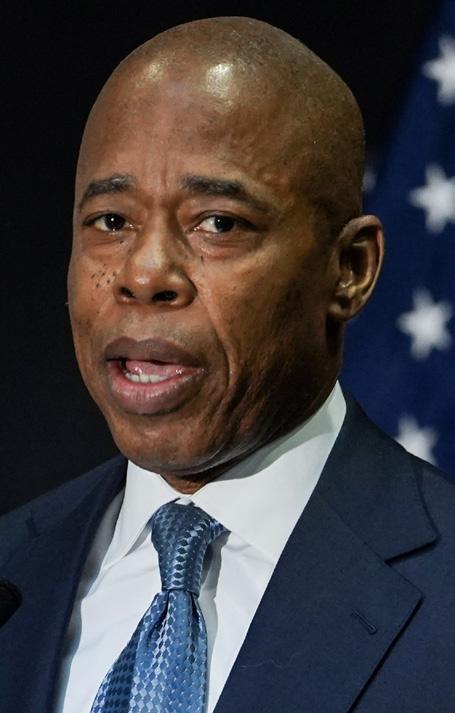
In February of this year, the Justice Department ordered federal prosecutors to drop the charges. The case was dismissed with prejudice, meaning the same charges cannot be brought against him. Many have said this was a deal with the Trump Administration in exchange for Adams assisting in the federal immigration crackdown.
Although he has remained a registered Democrat, Adams did not seek his party’s nomination in the June primary and instead ran as an Independent.
Adams’ name will remain on the ballot, as it is too late into the campaign for it to be removed.
Adams made the announcement on X, formerly known as Twitter, saying, “It has been my honor to be your mayor, and I am
The Suffolk County Police Department (SCPD) has a new staff member.
Hamilton, a black Labrador Retriever (pictured below), recently became the SCPD’s first therapy dog. He was presented with his police shield at the H. Lee Dennison Building in Hauppauge.
Hamilton’s handler, officer George Politis, will “focus on enhancing employee wellness and community relations,” according to the release. “Hamilton provides comfort and emotional support to both the community and members of the department, as well as visits to schools to build trust between young people and the SCPD.”
Hamilton was donated by Puppies Behind Bars, while Politis’ vehicle was outfitted with a donation from the Police Foundation.

By Madison Warren
Ronkonkoma-Lake Grove Open Forum Hosted by Leslie Kennedy
On Monday, September 29, Suffolk County Legislator Leslie Kennedy (R-Nesconset) hosted a community open forum at the Lake Ronkonkoma Firehouse, bringing together residents from Ronkonkoma, Lake Ronkonkoma, and Lake Grove. The event offered constituents the opportunity to voice their concerns and receive direct responses from local officials.
Kennedy said the turnout exceeded expectations, with between 50 and 60 people filling the room. She said it was great night for the community to get on the same page and to get work done.
“I never had a group of people after it was over, saying, ‘can we do this more?’ It was really nice,” Kennedy told The Messenger.
Elected officials in attendance included Brookhaven Town Councilman Neil Foley (R-Blue Point), Lake Grove Mayor Robert Scottaline, and representatives from Assemblyman Doug Smith’s (R-Holbrook) and Suffolk County Legislator Trish Bergin’s (R-East Islip) offices. Kennedy emphasized that forums like this allow residents to bring forward issues that might otherwise go unnoticed.
“We don’t have eyes everywhere. When constituents report their issues with as much detail as possible, it makes these issues much easier to work on,” she said.
Infrastructure was the most common concern. Participants raised issues with roads, lighting, and traffic congestion, including complaints about Old Nicolls Road, Smithtown Boulevard, and the lack of designated pick-up and drop-off areas at the Ronkonkoma LIRR station. Residents also questioned the durability of recently paved roads, which have already begun to crack. Foley responded that the town is engaged in litigation with the contractor over the work.
Vacant buildings, homelessness near the Ronkonkoma MTA lot, and the strain of increased population density were also discussed. Kennedy noted that while some concerns were familiar, others were new, underscoring the value of community feedback.
Protecting Women’s Health Starts with Awareness and Action
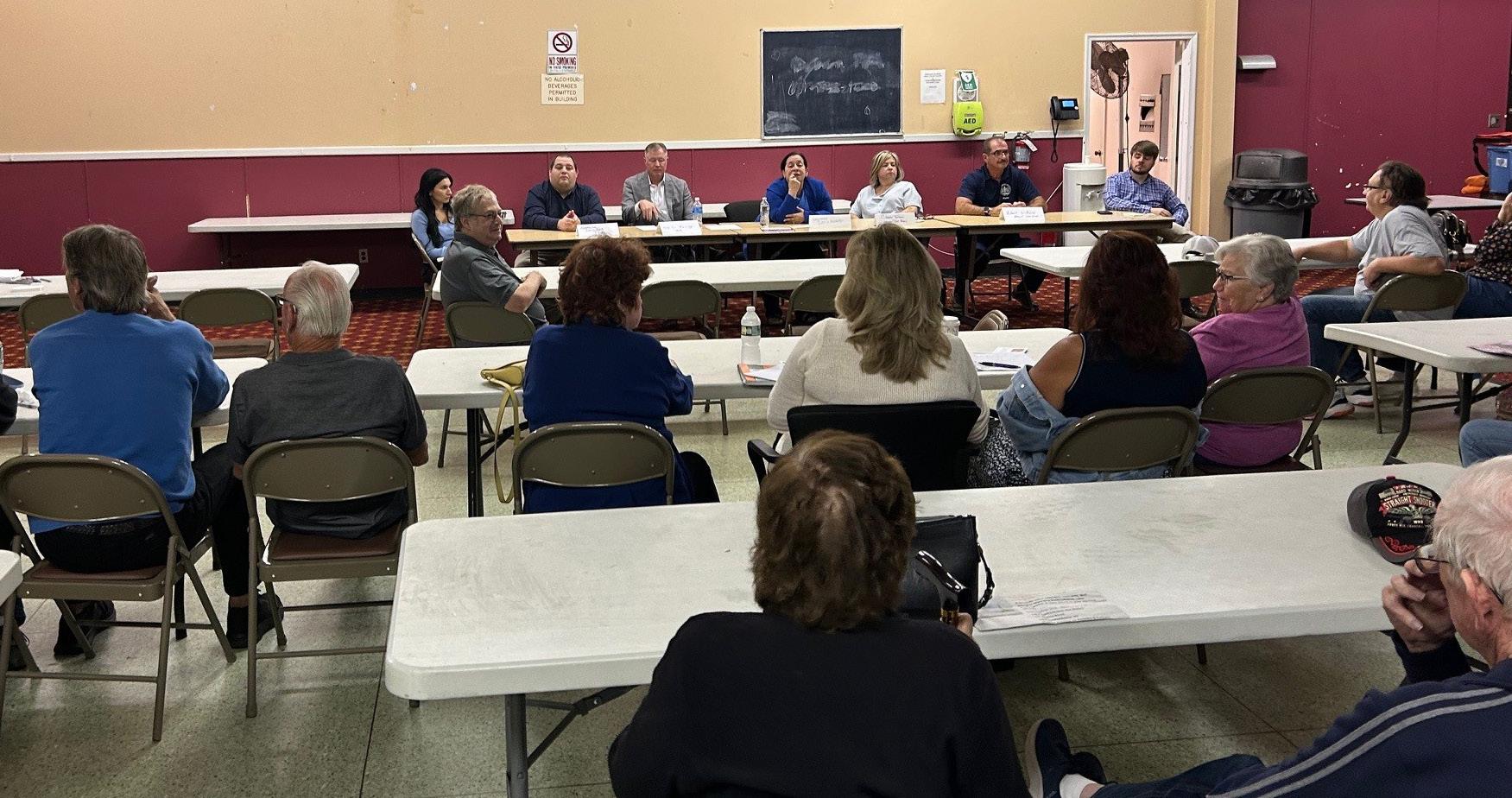
Kennedy highlighted that officials were able to provide answers on the spot for some concerns, while others would be addressed in follow-up. “It was nice to have a couple of things that we could say, we’re taking care of this,” she said.
Kennedy described the forum as upbeat and collaborative. “Nobody was angry. Everyone was pleasant, happy, and trying to find solutions,” she said. “There was lots of laughing—it was a good night.”
She added that she plans to continue hosting forums like this in different parts of her district. She also thanked the Lake Ronkonkoma Fire Department for providing the space.
For Kennedy, the evening’s success reaffirmed her belief in open communication. “I tell people all the time — you elected us, so use us. If something’s bothering you, call. We’re not going to yell at you; we’re here to help.”
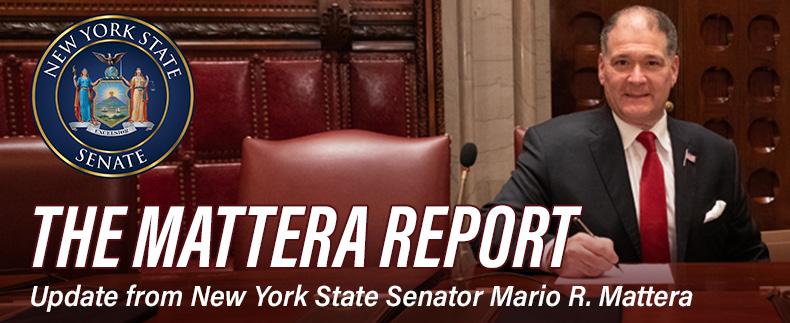
October is Breast Cancer Awareness Month, a time to raise awareness, share information, and encourage action that can save lives.
As a husband, this issue is deeply personal. My wife, Terry, was diagnosed with Stage 2B breast cancer after postponing a routine screening for six months. Like many women, she was busy taking care of others and put her own health last. That delay had consequences. We are thankful every day for the care she received and for her strength during treatment. Her journey is a reminder to all women: do not delay your screenings.
Here on Long Island, breast cancer rates are significantly higher than the state average. In Suffolk and Nassau Counties, incidence rates are approximately 13 to 18% higher. While environmental concerns have long been studied, recent research continues to point to known risk factors…such as delayed screenings, family history, and certain lifestyle factors, as the most significant contributors.
The good news is that our region is home to some of the best screening, treatment, and education resources in the country. Whether you are looking for preventative care, support, or treatment, there are organizations right here in our community that can help.
Below are several trusted local resources:
Breast Cancer Screening and Support Services
Stony Brook Medicine – Breast Cancer Screenings: Offers 3D mammography, with community office and hospital locations, as well as mobile screening vans across Long Island.
Phone: (631) 689-8333
Address: 101 Nicolls Road, Stony Brook, NY
Website: stonybrookmedicine.edu
Carol M. Baldwin Breast Care Center: Provides comprehensive management of breast cancer and benign breast conditions using a team-based care approach.
Phone: (631) 444-4550
Location: Stony Brook University Hospital
Catholic Health Cancer Institutes: Delivers early detection, diagnostic testing, and
advanced treatments with an emphasis on personalized care.
Phone: (844) 862-2623
Website: chsli.org
Memorial Sloan Kettering – Long Island: Nationally recognized center for cancer treatment and research, with a dedicated breast cancer program.
Phone: (631) 212-6070
Address: 650 Commack Road, Commack, NY
Website: mskcc.org
NYU Langone Breast Cancer Center: Provides a full range of breast health services including imaging, surgery, and genetic counseling.
Phone: (516) 663-6400
Website: nyulangone.org
The Maurer Foundation: Delivers breast health education in schools, businesses, and community settings, promoting early detection and prevention.
Phone: (631) 524-5151
Address: 534 Broadhollow Rd, Suite 330, Melville, NY
Website: maurerfoundation.org
Adelphi NY Statewide Breast Cancer Program: Offers education, emotional support, and advocacy for patients, families, and professionals.
Hotline: 800-877-8077
Website: adelphi.edu/breast-cancer
Islip Breast Cancer Coalition: Provides support services and outreach for breast cancer patients and survivors in the local area.
Phone: (631) 969-8282
Email: info@islipbreastcancer.org
Website: islipbreastcancer.org
If you or someone you love is due for a screening, now is the time to schedule it. Share this information with your family, friends, and neighbors. Early detection saves lives. Together, we can continue to protect and empower the women in our communities.
Published by Messenger Papers, Inc.
By Madison Warren
Community Spotlight
Pal-O-Mine Marks 30 Years
The Pal-O-Mine Equestrian Center in Islandia is having its biggest and best year yet. This non-profit therapeutic horse program just celebrated its thirtieth anniversary, having first opened its barn doors in 1995. Specializing in equine therapy tailored to individuals with disabilities, survivors of trauma, veterans, and first responders, Pal-O-Mine carries a unique mission: to help its students grow, learn, and heal throughout life. Today, it stands as one of Long Island’s most prominent equine-assisted programs, continuing to change lives through the powerful bond between humans and horses.
Lisa Gatti, founder and CEO of Pal-O-Mine, was inspired to start the organization after receiving a book from her father while in college. The story followed a young girl whose life was changed by a devastating accident that left her in a wheelchair. Through the love and connection of both people and horses, the girl discovered a renewed sense of purpose. From that moment, Lisa knew the path she wanted to take — and she has never looked back.
Fast-forward to the present day and Pal-O-Mine has grown into a thriving foundation spanning 13 acres across four properties. The property is home to 25 working horses, as well as miniature horses, donkeys, chickens, and sheep. With the support of more than 85 dedicated volunteers, Pal-O-Mine has positively impacted the lives of over 15,000 participants.

Although horse therapy is the heartbeat of the organization, there is much more to Pal-O-Mine. For those who feel that equine therapy may not be for them, the organization offers a variety of other programs. These include traditional riding lessons, Equine-Assisted Learning (EAL), Equine-Assisted Psychotherapy (EAP), speech and occupational therapy, the Job Security Through Equine Partnership (J-STEP) vocational program, specialized services for military members and first responders, corporate leadership training, welding classes, horticulture classes, yoga, and wellness experiences.
Pal-O-Mine also offers unique events designed to serve a wide range of groups. Weekend-long retreats for military personnel, veterans, and others are a regular part of their programming. These retreats often incorporate self-care activities, horse therapy, and additional wellness experiences, with participants staying on the property in Pal-O-Mine’s residential house.
In addition to retreats, Pal-O-Mine hosts annual fairs and festivals, many of which are open to the public. Their upcoming Open House and Fall Festival on October 13 will feature farm tours, crafts, scavenger hunts, horsemanship demonstrations, raffles, and more. Later in the month, on October 19, they will hold their VetFest and NYPD Fundraiser, further highlighting their strong ties to the community. To close out the year, Pal-OMine will host its annual Winter Wonderland in December, complete with holiday treats, a walk-through light show, and the chance to take photos with Santa.

The property is full of spaces designed for both participants and animals to enjoy. A large, accessible playground is available for children,
and during equine therapy lessons, horses will even drop participants off there at the end of a ride. Pal-OMine also features a unique “horse playground,” complete with obstacle courses that both riders and horses can navigate together, adding fun, variety, and challenge to the experience.
The garden and greenhouse on the property are integral to Pal-OMine’s vocational program. Here, young adults with disabilities cultivate flowers, vegetables, herbs, and fruits, gaining hands-on experience and practical life skills. Participants harvest their own produce and transform it into items such as soaps, decorations, and other handmade goods. Some of these products, including fresh flowers, are even sold to local shops across Long Island, giving participants both pride in their work and realworld job training opportunities.
Beyond the expansion of programs and facilities over the years, PalO-Mine has been accomplished by the strength and generosity of the community. Countless donations and grants have supported the organization, recognizing the hard work that Lisa Gatti and her team continue to put into making a difference on Long Island.
Recently, Pal-O-Mine received an $8,000 grant from Suffolk County, presented by County Executive Ed Romaine (R-Center Moriches). The funding, made possible through proceeds from the 2024 Suffolk County Marathon, will be used to enhance programs specifically designed for veterans and their families.
The opportunities at Pal-O-Mine are endless. As Pal-O-Mine celebrates 30 years of service, its mission remains as strong as ever: to foster healing, growth, and connection through the powerful bond between humans and horses. With continued community support, dedicated staff and volunteers, and an ever-expanding range of programs, the organization is poised to make an even greater impact in the decades to come. Pal-O-Mine stands as a shining example of what can be accomplished when compassion, vision, and community come together.
For more information, to volunteer, or to support their mission, visit pal-o-mine.org. Pal-O-Mine is located at 829 Old Nichols Road in Islandia, and can be reached at (631) 348-1389.

Photo credit - Jenna Rugile
By Matt Meduri
Candidate: Shala Pascucci
Residence: Kings Park
Candidate Spotlight
Shala Pascucci
Occupation: Former teacher and social worker, current small business owner
Office Sought: Suffolk County Legislature, District Thirteen
Prior Elected Office: Kings Park Board of Education, elected 2021, re-elected 2025
Party Endorsements: Democratic
The Thirteenth District of the County Legislature is open. Legislator Rob Trotta (R-Fort Salonga) is term-limited. Shala Pasucci is vying for the open seat in her first bid for government office.
Shala Pasucci sat down with The Messenger for this candidate spotlight interview.
Q: What is your professional background, and how do you think it equips you for the County Legislature?
A: I’ve had a pretty diverse career path, which I think has given me a unique perspective. I earned a Master’s in Social Work, where I managed programs and staff while helping families navigate complex systems. I later worked as a teacher, which taught me how to explain complicated issues clearly and connect with different audiences. As a small business owner, I learned the importance of being responsive to clients and delivering results.
On the Kings Park School Board, where I was recently reelected, I work with multimillion-dollar budgets and make decisions that directly affect families in our community.
What really sets me apart is what I have accomplished even as a candidate. I created a development tracking website, filed public comments on proposals such as Beechwood, analyzed and wrote about environmental reviews, including the Gyrodyne FEIS, and spoke at the Tanzi abatement hearing. I also hold regular office hours and am organizing a community town hall because you cannot represent people without listening to them.
If I can accomplish all of that while campaigning, it demonstrates that I am ready to hit the ground running as a legislator.
Q: What would you consider to be your best or proudest professional accomplishment?
A: Honestly, I’m most proud of being re-elected to the school board. It is one thing to get elected the first time, but being chosen again means I have earned people’s trust by actually doing the job well. Managing budgets and making tough decisions while keeping taxpayers’ interests first has been incredibly rewarding.
I am also proud of the engagement work I have been doing as a candidate. Residents tell me they finally feel like someone is listening to their concerns about development and transparency. They appreciate having someone who does the homework and shows up prepared. To me, that is the real accomplishment: building trust and getting results even before I hold county office.
Q: If you’re elected, what are your top priorities for the Thirteenth District?
A: When I talk to neighbors, three concerns come up again and again. First is housing. We are pricing out the very people who make our community work. I want to establish a housing trust fund that supports teachers, police officers, firefighters, seniors, and young graduates in staying in the area. We can achieve this by utilizing revenue already in the system, such as transfer fees and developer contributions, without increasing anyone’s taxes.
Second, we must stop allowing developers to build whatever they want and then leave taxpayers with the bill when our roads are clogged or our schools are overcrowded. If you are going to profit from our community, you should also pay for the infrastructure your project requires.
Third, government has to start listening. I hold office hours and town halls because you cannot represent people if you do not know what they are thinking. That should not be revolutionary, but too often it is.
Q: If you’re elected, what are your top priorities for the County overall?
A: At the County level, three priorities rise to the top. First is protecting our water. From outdated septic systems to nitrogen pollution, our water quality is under threat. The county must accelerate upgrades and secure state and federal funding to complete the work.

Second is affordability. High costs are pushing families out. Seniors worry about whether they can retire here, and too many young people feel they have no choice but to leave the state to find an affordable place to live. I would support county programs that lower long-term costs, from smarter waste management to housing options that work for both older residents and the next generation. That includes reusing vacant commercial space for housing, protecting open space from overdevelopment, and creating a “House Our Own” fund to help first responders, teachers, and local families stay here without raising property taxes.
Third is accountability in development. Too often, large projects move forward without enough transparency or planning. As a legislator, I would advocate for stronger oversight and real community input so residents feel heard before decisions are made, not after.
Q: What is your favorite quote, motto, or work ethic?
A: “Do what you can, with what you have, where you are.” - Theodore Roosevelt (attributed). That has always resonated with me because it is about taking action rather than waiting for perfect conditions or someone else to solve problems. That has been my approach throughout this campaign. When residents said they could not track the progress of development projects, I built a website with the skills I had. When people said they felt disconnected from government, I began holding office hours right away. And when the Tanzi abatement hearing came up, I showed up and spoke out to make sure community concerns were heard.
You don’t need to have all the answers or all the resources to start making a difference. You just need to be willing to use whatever tools and skills you have to help your community. That’s the mindset I’ll bring to county government, always looking for ways to move forward and get things done, even when the situation isn’t perfect.
Q: How do you like to connect with your community?
A: I am a hands-on person. My family and I have lived in Kings Park for twenty-seven years, and this community means everything to us. My husband serves with the Suffolk County Police Department, and we are raising our kids here. One is a senior at Kings Park High School, and the other is in college.
I love the community feel of places like the Kings Park Bluff and our local restaurants, where you always run into neighbors. That sense of connection is what makes this area special. Serving on the school board also allows me to attend community events, such as school plays, science fairs, and senior recognition nights.
I have been holding office hours at local spots where people can stop by and share what is on their minds. My approach is simple: show up, listen, and follow through. Whether it is at school board meetings, community gatherings, or just running errands around town, I try to be accessible and responsive to what people are telling me they need.
The Messenger thanks Shala Pascucci for her time for this interview.
About the Thirteenth District
The Thirteenth District includes Fort Salonga, Head of the Harbor, Kings Park, Nissequogue, San Remo, St. James, and parts of Commack and Smithtown hamlet within Smithtown Township, and parts of Commack within Huntington Township.
The Thirteenth District is one just two seats that are open this year, the other being the Fourteenth District, which is being vacated by Presiding Officer Kevin McCaffrey (R-Lindenhurst). Legislator Trotta was elected to six terms in this seat, running unopposed last year.
By Matt Meduri
Candidate: Sal Formica
Residence: Commack
Office: Suffolk County Legislator, District Thirteen
Prior Elected Office: None
Endorsements: Republican, Conservative
Candidate Spotlight
Sal Formica
Notable Endorsements: Local 138, Local 200, Local 638, all police unions, County Executive Ed Romaine (R-Center Moriches), Senator Mario Mattera (RSt. James), Presiding Officer Kevin McCaffrey (R-Lindenhurst), CSEA, AME, SCCC Faculty Assn., LiUNA, Huntington Town Supervisor Ed Smyth (R-Huntington Bay), Assemblyman Mike Fitzpatrick (R-St. James)
Sal Formica is making his foray into government with a run for the open seat of the Thirteenth District of the Suffolk County Legislature. He defeated Frank Black (R-Smithtown) in the June primary by a wide margin of 57%-42%. His sights are now set on the general election.
Sal Formica sat down with The Messenger for this candidate spotlight interview. Editor’s Note: Some of these questions were posed to Mr. Formica during his interview for the June primary. Since the answers have remained the same, we have kept them for this interview.
Q: What is your professional background and how does it equip you for the Legislature?
A: I started my professional life in banking; I worked at Chase Manhattan Bank with about ten years of cumulative experience. In 1990, I went into the NYPD, started out in the 17th Precinct, covering the U.N. for my first seven years. That was where I got my first look at what politics is about, especially in protecting U.S. presidents. My goal was to get into the Elite Emergency Services Unit, a call I got in 1997. It was a very challenging eight months of training, especially for high-profile dignitaries. I was sent to FBI school to become a sniper and I retired as a secondgrade detective.
I moved into Commack thirty-six years ago. About three years in, my son was choking and the fire department showed up. Shortly thereafter, they were knocking on my door for me to join. I joined and I’ve been a member for thirty-two years, and I’m an ex-chief of Commack F.D. I also have an array of experience on the EMT, although my license is currently expired. I was also president of the Commack South Little League for fifteen years. My whole career has been built around public safety, managing people, and responsible budgeting. I also had my own business, Sal’s Ristorante, on Jericho Turnpike in the Smithtown-Commack area for thirteen years. I had to budget finances, manage people, and I worked as head chef. I sold the restaurant in June 2023 to prepare myself to run for Legislature.
Q: What would you say is your proudest professional accomplishment?
A: First and foremost is Emergency Services, where I spent thirteen years. It was truly a dream to join an elite unit like that. When the community needs help, they call the police. When the police need help, they call the Emergency Services Unit. We are the end-all before you escalate it to the National Guard or the military. It was a proud time of my life to join and be a member of 350 other officers.
Along the way, I was one of the original members for the Coalition of Caring for Commack School District, tackling problems like drugs. I’m also proud of my time in the F.D. I was fortunate enough to not only become chief, but on my way up, I was in charge of many units within the F.D. One was the Training Committee. I trained a lot of young people; the best part of that was in charge of fire prevention. I would go to all the schools with the fire prevention trailer to teach the young folks about how to react to a fire situation, establishing meeting points, evacuating the house, etc. I’m also proud of the fact that I took a huge gamble in being a chefowner without much knowledge besides watching my mother and grandmother in the kitchen. During COVID-19 when a lot of restaurants were going down, we budgeted correctly, and the community loved us and supported us. We donated 1,000 meals to all first responders who were all putting their lives at extra risk during the pandemic.
Q: What are your top priorities for the Thirteenth District if you are elected?
A: Infrastructure is always one of the major concerns. The roads, whether they’re State or County, no matter who they belong to, will be in constant need of address. I also want to have meetings with the leaders on the law enforcement side to see what they need as far as spikes in crime in our district and addressing those with the PD to enhance patrols. I want to also look into the materials we’re using to make them more durable.
I’m also thinking about the budget next year. Executive Romaine has already proposed the budget for this year. I want to make sure the monies that come back to LD-13 are addressed. Kings Park is headed down the right path as far as the revitalization of Main Street. The sewers are going in with Phase 1; hooking up is the next phase. The Town is going to persuade those buildings into beautifying.
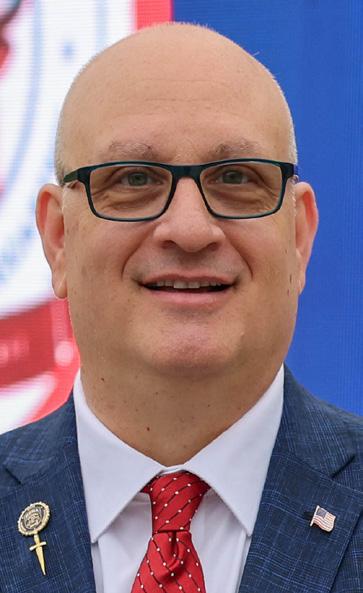
Once everyone hooks up to sewers, there’s some kind of incentivized plan through the county to defray the costs to the buildings. Once the connections are made, that’s when the next phase of Kings Park revitalization will happensidewalks, curb cutouts, a little park planned from across the F.D. on State land that’s currently utilized as a parking lot by the library. Once they do that, all the wires along the curb cutouts on Main Street will be moved to the rear of the buildings. The landscape will look similar to what you see in St. James.
St. James is probably 80-90% there, waiting for final touches. Smithtown hamlet is partially in LD-13. We have half the money for the sewers there and Executive Romaine has promised the rest over the next three years. Those are great things that we have to build off.
My hometown of Commack is tough for a classic Main Street, but people there are keen on beautifying. I’d like to meet with the community there to see what we can do and if there’s anything I’d be able to allocate. I’d like to talk about moving Cannon Park - at the fork of Jericho Turnpike and NY-454 - to the Town’s possession for more regular upkeep.
Q: What are your top priorities for the county at-large?
A: Although it wouldn’t be up to me, I’d like to be on committees on Ways and Means, Public Safety, and FRES, because of my background in the fire department and police department. Near and dear to me also would be the Veterans Committee. I want to write legislation to institute a certain distance that people have to be from police officers while they’re performing their duties. People get within six inches of their faces with their cell phones. As someone who spent 20 years as a cop, if I’m on the floor trying to put the cuffs on someone, what’s to stop someone from being right on top of me, and taking my gun to shoot me in the back of the head? When I was in the academy 35 years ago, we were taught that people have to stay within four-to-five feet away from us. They used to say at a baton-length - no closer. People should still be able to protest and video tape, but not when you’re getting close to a cop like that.
I always feel we don’t do enough for Veterans. Specifically, in housing, like my running mate, Laura Endres (R-South Setauket) [District 5], housing for Veterans is very important. On the other end of it, the law enforcement-first responder housing. It’s creating affordable housing for the folks who protect us on a daily basis. We have to figure out through incentives or a rental system, where we give discounts. We don’t want a situation where all of our young people, especially law enforcement, are traveling an hour to work because that’s all they can afford. It is important that we address that. Additionally, we have to make sure our infrastructure is up to the task. Executive Romaine has already put the wheels in motion, and I want to add more to it by being fiscally responsible. 75% of this county is on cesspools; you cannot expand unless we have the right infrastructure in place. These cesspools and tanks are so outdated, it’s ridiculous. They do not help our nitrogen pollution and water quality. We’re dead in the water (no pun intended) if we don’t have good drinking water and marine life. It’s not only part of the beauty here, but it’s what advances us. We have to take a serious look at how we expand what Romaine has already put in place. It’s a great starting point, we just have to figure out how to kick it up a notch.
Q: What is your favorite quote, motto, or work ethic?
A: “The only way to do great work is to love what you do.” - Steve Jobs. The word “work” isn’t there anymore. It becomes life-work, something you love. A motto I preach to my kids, “What doesn’t kill us makes us stronger.” Lastly, work ethic, “Life is about working hard, not excuses.” It’s very easy to say “I can’t, I won’t.” I removed that from my vocabulary and that’s how I raised my children. To me, life is about hard work and not making excuses.
Q: How do you like to connect with your community?
A: I’m a big car buff. Whenever I get a chance, I try to go to a car show. I always laugh about how we connect with our neighbors, as an Italian, through food. The reality is, if you’re involved in your community, those connections happen through many different ways. Going to church on Sunday, being on a little league field, the 140-member F.D. - all of a sudden, you become friends. It’s the simple things: going for family walks around the block. We’ve always loved doing that; you see your neighbors, they wave, you talk about the neighborhood. That’s what it’s about. One of the things I’ve said on day one, if I am elected, is an open-door policy. I will be there any time for my constituents. If they want to have a community meeting on where we stand with things in the community on a regular basis, we can do that. I would need my constituents to say something if they see something.The only way I’ll be able to repair it is by you calling my office.
The Messenger thanks Sal Formica for his time for this interview.
The Necessary Standard for American Education
Close Presidential Elections
By Matt Meduri
Former Vice President Kamala Harris (D-CA) is under fire for calling the 2024 presidential election the “closest election this century.”
Since we’re ensconced in elections here at The Messenger, we know that to be patently false, but not entirely too far from the truth. We’ll assess just how 2024 stacked up to other elections this century - so far - and we’ll analyze different ways to determine the closeness of an election.
The Short Answer
This column will seek to address the long-forgotten concept of civics and how it relates to American government in general, from the federal level to the local level. This column will explore Constitutional rights, the inner workings of government, the electoral process, and the obligations and privileges of citizens.

If you don’t want the numbers, we’ll give it to you straight. The closest election this century - so far - was 2000, and by a long, long shot.
George W. Bush (R-TX) won the Electoral College with 271 electoral votes. With 270 needed to win the White House, his margin is the thinnest not just in the Twenty-First Century, but in all of modern presidential politics. In fact, only one other election was decided by just one electoral vote: 1876, in which Rutherford B. Hayes (R-OH) defeated Samuel Tilden (D-NJ). There’s more in play there, however; we’ll discuss the bitterly contentious 1876 election in another column.
Moreover, the popular vote was excruciatingly close in 2000. Al Gore (D-TN) won the popular vote by just a 0.5% margin - 48.4% to Bush’s 47.9%. Out of about 101 million votes cast, Gore won the popular vote by just 543,895 votes. The 2000 election also marked the fourth of five presidential elections in which the winner lost the popular vote.
In 2024, Donald Trump (R-FL) won 312 electoral votes to Harris’ 226. His margin in the popular vote was 1.5% - about 2.3 million votes out of 152 million cast.
So, Vice President Harris, in our humble opinion, could do with a quick look at the numbers. But there’s more to just margins that can constitute a close election.
The Electoral College
As we know, 270 electoral votes are needed to win the presidency, regardless of the popular vote. Bush’s 2004 win with 286 electoral votes is also close, as was Jimmy Carter’s (DGA) 297 votes in 1976, and Woodrow Wilson’s (D-NJ) 277 votes in 1916.
The Electoral College remains static and dynamic at the same time - static in that the cap of 538 electoral votes hasn’t changed since 1964, but dynamic in that the states’ individual allocations can change every ten years pursuant to the Census. Moreover, the states at play change much more than people think.
Most consider any state decided by less than a ten-point margin as “close.” Anything within a 1-5% margin is generally considered “very close.” Anything decided by less than a 1% margin is considered “razor-thin.” The “sweet spot”, as we’ve described previously, is a 10-15% margin. This is where a state could either be slowly transitioning into a more competitive battleground, or moving into a safer column. States declining in that regard appear to be Illinois, New York, Alaska, and Kansas, while states moving into safe territory appear to be Florida, Ohio, Iowa, and Colorado.
While much of the focus is on the overall Electoral College and popular vote counts, looking state-by-state results can offer a clearer picture.
Let’s start with the 2024 election (pictured right), as this one is fresh and the results won’t be too surprising. In terms of states decided by less than ten percentage points, only fourteen out of fifty fit that bill. The closest was Wisconsin (Trump +0.86%), with “very close” Trump-won states consisting of Michigan, Pennsylvania, Georgia, Nevada, North Carolina, and the same for Harris being New Hampshire and Minnesota. “Close” for Trump: Arizona; “close”
for Harris: Virginia, New Jersey, New Mexico, and Maine.
Compare that to 2000, which had twenty-two states within a ten-point margin. Not only have elections gotten more partisan, but the map has shrunk since the beginning of the century. We won’t list every single state, but some are the usual suspectsWisconsin (Gore +0.22%), Minnesota (Gore +2.40%), New Hampshire (Bush +1.27%), and Nevada (Bush +3.55%).
But many more were involved in that list, such as Oregon (Gore +0.44%), New Mexico (Gore +0.06%), Vermont (Gore +9.94%), Tennessee (Bush +3.86%), and West Virginia (Bush +6.32%). Map 1 (pictured above) shows the 2000 election on a 16-color schematic, with the colors scaled by five-point intervals. The palest color shows a “razor-thin” win, while the darkest colors show wins of thirty or more points - absolute landslides. You can see just how many states were at least “close” that year, as well as how many were in the “sweet spot.” Six were within the 10-15% range, including now-blue states California and Illinois, as well as now-swing states Georgia and North Carolina.
Some have also moved markedly since 2000. Rhode Island, New York, and New Jersey saw massive shifts to the right in 2024 - although still presently favorable to the Democratic Party - while Alaska and Nebraska are nowhere near as Republican as they once were - although still presently favorable to the GOP.
Additionally, all fifty states swung towards the right this year. This is the first time that all fifty states and the District of Columbia swung in the same political direction since 1976. While many shifts were not massive, it’s still a significant haul considering both 2020 and 2024 were competitive elections. Compared to 1976, which was a very close election, 1972 had been a landslide year for Nixon, making the 1976 fifty-state shift more of a correction to a competitive middle than a uniform swing against a party.
For perspective, 1976 had twenty-nine states decided by ten points or less, and 1960 had thirty-one states in that same category.
County by County
A more in-depth look at elections comes from the county level, where we can see a much different story. This isn’t more in terms of raw numbers, but margin swings - the difference between last election’s numbers by county compared to another. In terms of those numbers, Trump swung 2,810
counties or county-equivalents to Harris’ paltry 329. Most of Trump’s best gains were in the Rio Grande Valley of Texas, South Florida, California’s Central Valley, and Greater NYC area.
The Popular Vote
Popular vote statistics are also static and dynamic - static in that they’re calculated the same way each time, by dynamic in that the figures depend on turnout, and are affected by the steadily increasing number of votes cast per election. As the country becomes more populous, more popular votes are cast each year.
To put this in perspective, Donald Trump’s 77,302,580 votes in 2024 is the most received by a Republican in presidential history. Joe Biden’s (D-DE) 81,283,501 in 2020 is the most received by a Democrat in presidential history, as well as by a candidate of any party to date. This doesn’t necessarily mean we’re in “special” times as far as elections go; the number keeps rising every four years. A plateau is inevitable, but for now, it seems that that’s the operating logic.
Since the popular vote began being fully recorded in 1824, only five presidents have been elected while losing it: John Quincy Adams in 1824, Rutherford B. Hayes in 1876, Benjamin Harrison (R-IN) in 1888, George W. Bush in 2000, and Donald Trump in 2016. In 2016, Donald Trump (R-FL) lost the popular vote by 2.09% over Hillary Clinton (D-NY), the largest margin for such a scenario in the modern era. However, only two margins precede his: Hayes’ loss by 3% in 1876 and John Quincy Adams’ loss of 10.44% in 1824, although the latter election was extraordinarily complicated - another conversation for another column.
However, nineteen presidents have been elected while only gaining a plurality of the popular vote. A majority is regarded as 50%-plus-one of the overall vote. A plurality is still decided as the most votes received, but under that 50% mark. Trump earns some consternation for having not received a majority in this past election, only missing is by a fraction of a point. He won a plurality of 49.8% to Harris’ 48.3% - a margin of victory for Mr. Trump of 1.5%. This makes Trump just the fourth president since 1880 to win two presidential elections and receive only a plurality in both of them.
We’ll point out that strong third-party performances have an effect on majority-plurality wins, but, once again, that’s a topic for another column.
The 2000 election, however, wasn’t the closest in history. The closest popular vote margin was 1880, when James A. Garfield (R-OH) won by 0.11% - or 1,898 votes out of almost nine million cast - over Winfield S. Hancock (D-PA). In modern times, John F. Kennedy’s (D-MA) 0.17% win over Richard Nixon (R-CA) in 1960 was closer than the 2000 result. Jimmy Carter’s 2.06% win in 1976 is also regarded as a very close election.
Just How Close was 2024?
Trump won 312 electoral votes out of a total of 538. As far as “this century” goes, in the Vice President’s words, that’s the third-highest total of the seven elections this century, and the best, so far, for a Republican. Only Barack Obama (D-IL) won more electoral votes, with a whopping 365 in 2008, and a more modest 332 in 2012.

As far as the popular vote this century, 2000 remains the closest at 0.51%. Trump’s 1.5% last year is the second-closest, followed by Clinton’s 2.09% in 2016, Bush’s 2.46% in 2004, Obama’s 3.86% in 2012, Biden’s 4.45% in 2020, and Obama’s 7.27% in 2008.
So, while the 2024 election was close by many metrics, the grand scheme of history shows that there have been far closer elections, especially this century. Under the hood, while Harris’ defeat wasn’t a landslide, it was still a stunning underperformance.
Around Town
Town Hosts Packed Free Fall Concert Featuring The Lords of 52nd Street
The Town of Smithtown, in partnership with Cosentino Companies, proudly hosted the annual Free Fall Concert on Friday, September 12, 2025, featuring The Lords of 52nd Street, the legendary members of Billy Joel’s original band. Callahan’s Beach was filled to capacity as residents gathered for an unforgettable evening of timeless music, community spirit, and patriotic pride.
“Each year, around Patriot Day, the people of Smithtown come together to remember, to reflect, and to celebrate the freedoms we cherish. This year, a free Fall Concert was made possible thanks to the extraordinary teamwork of so many,” said Supervisor Ed Wehrheim (R-Kings Park). “I am deeply grateful to our Parks Department, who worked around the clock to set up the venue; to our Public Safety team, who managed outdoor parking and ensured the safety of the crowd; the Recreation Department and my team in the Supervisor’s Office, who handled the logistics of organizing the concert. It was especially meaningful to bring this concert to the Kings Park community, after so many residents had reached out on social media and to my office asking for it, after the Chamber’s loss of county omnibus grant funding. This concert could not be possible if not for the generosity of our sponsor, Cosentino Companies. Their commitment to honoring their former employee, John Baker — a Vietnam Veteran who never built anything in Smithtown without preserving something special — was both a stunning gesture and a beautiful tribute. Their partnership continues to enrich our community, and I couldn’t be more grateful to share this unforgettable night with the people of Smithtown.”

took the stage at 7:00p.m., performing the hits that defined a generation. Midway through the show, the band delivered a moving rendition of Goodnight Saigon, inviting Vietnam Veterans to join them on stage. Supervisor Wehrheim, Hon. Jack Toomey, and fellow Kings Parker, Ken Boss stood shoulder to shoulder while Veterans lined the stage arm to arm, as the crowd lit up the night sky with cell phone flashlights. The standing ovation that followed was a deeply emotional, unforgettable moment for all in attendance. The band performed three encores for the crowd, which didn’t want the night to end.
Concertgoers also enjoyed an array of local favorites. 3 Sons Deli & Catering generously donated a tent and prepared food for the band, while serving incredible BBQ to the crowd. Philly Pretzel Company and Ralph’s Famous Italian Ices of Kings Park added delicious hometown flavor, making the night a true Smithtown celebration.
From honoring Veterans and celebrating community milestones to singing along with the music that shaped New York’s soundtrack, the Free Fall Concert at Callahan’s Beach once again proved to be more than an event — it was a moment of unity, gratitude, and pride for the people of Smithtown.
About The Lords of 52nd Street Band
The concert opened with a heartfelt surprise, as Supervisor Wehrheim invited young Peter Cosentino and his fiancée Gianna to the stage, who announced their engagement to the community. The crowd erupted in applause, celebrating their exciting news before the music began.
As the sun set over the Long Island Sound, The Lords of 52nd Street
The Lords of 52nd Street — Richie Cannata, Liberty DeVitto, and Russell Javors — are the legendary musicians who helped create Billy Joel’s iconic sound. From recording classics like New York State of Mind and Only the Good Die Young to touring the world’s biggest arenas, the Lords became known as Joel’s original band. Inducted into the Long Island Music Hall of Fame in 2014, they reunited and have been thrilling audiences ever since with performances that critics say sound just like the original recordings — if not better.
For Smithtown’s Veterans, Our Actions Must Match Our Patriotism
Dear Editor,
My name is Jesse Phillips, and I’m a candidate for Smithtown Town Council. I served in the U.S. Navy and also completed two combat tours as a U.S. Marine. When my service ended, I returned home carrying the invisible wounds of war and facing the all-too-common struggle of transitioning to civilian life.
When I moved to Smithtown in March of 2018 (my wife is a life-long St. James resident, and easily convinced me that this was the perfect place to raise a family), I hoped to find a community with a robust support system for veterans like myself. I was looking for more than just a welcome sign; I needed guidance on benefits, connections for mental health support, and a community that understood the unique challenges we face. I found that while Smithtown’s patriotism is visible on every main street, its practical support for veterans is hard to find.
A look at our town’s efforts reveals a painful gap. Our website directs Veterans to a County office in Hauppauge. Our Town Board’s public actions are largely limited to ceremonial proclamations and memorial approvals. These gestures matter, but they don’t help a Veteran get to a VA appointment, navigate a PTSD crisis, or understand the tax benefits they’ve earned.
We don’t have to look far to see a better way. Just consider the Town of Oyster Bay. Their Veterans’ Services Department doesn’t just point people to the County; they provide direct, Town-run assistance. They have a dedicated, full-time Director of Veterans Services who helps residents with benefits claims, organizes events, and serves as a dedicated advocate. They provide transportation services for seniors and veterans. That is a model of a town that truly serves those who served.
Smithtown’s veterans, from the Greatest Generation to those who served in Iraq and Afghanistan, deserve this same level of commitment.
On the Town Council, I will fight to:
1. Establish a Smithtown Veterans Services Office: We need a dedicated, town-funded advocate, not just a link to a county website.
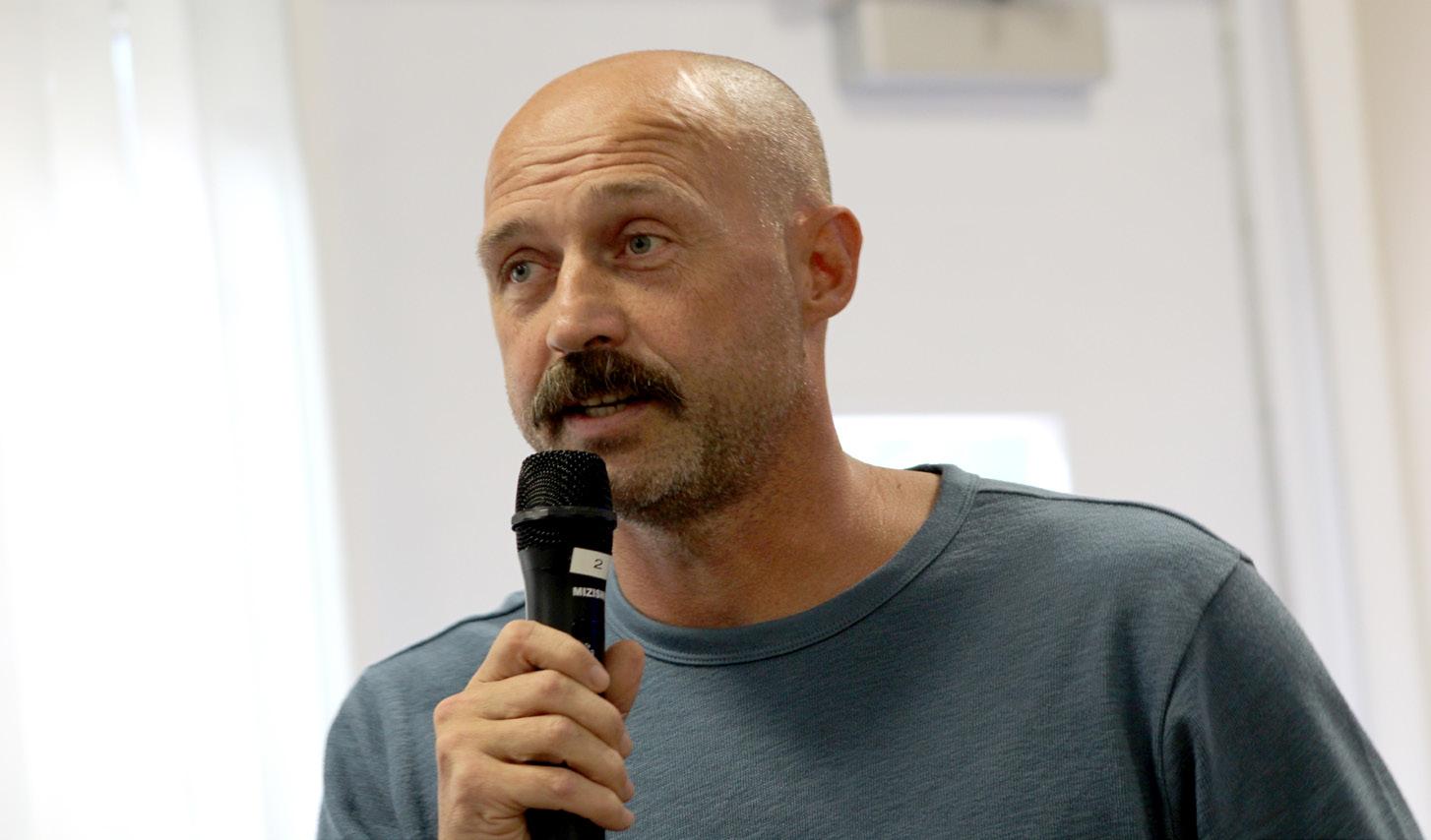
2. Launch a Veterans Transport Program: Partner with local organizations to provide free rides to the Northport VA Hospital.
3. Create a Veterans Resource Network: Forge partnerships with local mental health professionals and job placement services to create a ready-made support system.
It’s time our actions matched our words. Our veterans didn’t just serve on holidays; our support for them shouldn’t either.
Sincerely,
Jesse Phillips
Town of Smithtown
By Ellyn Okvist B.Sc.
The Black Walnut Trees
Lake Ronkonkoma has always honored events with a single memorial tree – examples being the WWII Memorial Tree (gone); the five European Beech trees (4 gone) and the First Arbor Day Weeping Beech Tree (recently gone). Our trees always had a significance that holds respect and honor to our community. On the other hand, the commerce trees, the trees that will bring in high value, were the way to plan ahead for future income, as the longer the trees mature, the higher the value increased.
The increase in value was understood for future income; however, on the way to maturity, the commerce trees held dual purpose, food being the primary example. The Black Walnut tree has the unique ability to produce fruit 1.5 to 2.25 inches in diameter, consisting of a hard-shelled, furrowed nut enclosed in a green husk, darker when ripe. The delicious nuts must be gathered early, before squirrels and other wildlife can consume them. Of all the native nut trees of North America, the Black Walnut is the most valuable.
Saturday we were invited to spend time and dinner with friends that own one of the oldest land parcels in the village. Taking a walk to catch up on friendships and family news, we came across hundreds of the fallen nuts of a Black Walnut tree. We had quite an experience sectioning it out in the overgrowth. While gathering the fruit, we were hit many times by the falling fruit - which gives quite a wallop once it hits you. It became quickly apparent that there were additional full-size trees, lined up perfectly just beyond the grass ridge, planted with precision and thought. Our group decided to cross the road and investigate further, as I had remembered seeing the fruit a few times at a different site. Sure enough, we once again found the same scenario down that stretch of land that was once owned by another old family.


Historically, these trees were originally cultivated in the mid-1700s in Lake Ronkonkoma, and the planting was followed by other families for need. People snacked on the nutritious walnuts out of hand, added them to soups and stews, and ground them into a meal for baking. The hard shells provided a perfect package for storing the nuts over winter. Saturday evening, we followed the recipe for extracting the nuts we had gathered and had an unexpected treat for our wonderful evening, tasting them and exchanging ideas and future uses amongst ourselves. We even made telephone calls to old families to share our surprise! This may remind us of the cranberry event every year right before Thanksgiving at Wolf Pond, and we are contemplating mixing the two to bring together with interested families with traditional recipes.
Referring to the photographs, note the size of this huge Black Walnut tree using the scale of the picnic table to compare; it is a giant. The pile of fruit that has landed on the ground is sizeable, as is the collection we added to the 55-gallon drum and later used for our learning experience.
The primary reason for growing Black Walnut trees is the value of the wood. Black Walnut trees (Juglans nigra) are well-known as one of the most valuable species in North America. With a natural, dark brown heartwood, these trees are highly valued for the depth and color they can give high-end pieces of furniture and woodwork. First and foremost, of course, is its beautiful dark color, which adds great color to any piece. Second, however, is its ease of use. Black Walnut is a relatively easy wood to work with, which makes it excellent to use for the variety of applications for which it is valued. Finally, Black Walnut is a relatively rare tree. Despite having a huge range that encapsulates the vast majority of the eastern United States, black walnut makes up only 2% of hardwood forest cover, which is a shockingly small amount. All these factors create the conditions for an extremely valuable tree with waiting markets. Early settlers discovered black walnuts growing in mixed forests from Canada to northern Florida and west to the Great Plains. They found that their rich-brown heartwood was exceptionally resistant to decay and used it as fence posts, poles, shingles, and sills.
Its logs are in such demand for veneer that “walnut rustlers” have made off with trees in the dead of night and even used helicopters in their operations. Ground thieves would cut the trunk as low as possible and secure it with rope or cables waiting for the helicopter to “lift” the tree right from the ground. There are cases of Black Walnut tree theft by cutting them down and then floating them down the river.

Black Walnut is a large, rugged, deciduous tree, 50 to 75 feet in width, sometimes reaching 150 feet tall. Dark, furrowed bark on the trunk. Wide-spreading branches form an upright, umbrellalike crown in the woods or a round-topped crown in the open. The well-formed trunk is usually devoid of branches a considerable distance from the
ground. Leaves up to two feet long with five to eleven pairs of leaflets along a central axis and a single leaflet at the tip. Midrib of the lateral leaflets off-center with the wider part of the blade toward the leaf tip. Leaflets emerge very late in spring and are yellow-green. When surrounded by other trees in the forest, Black Walnuts grow straight and tall with few, if any, lower branches. When planted in the open, the tree will branch out closer to the ground, developing a spreading shape that makes it easier to harvest its sweet, round nuts.
We are aware of the tree farms that were planted by a past local Maude Adams. She had plans for her hickory trees, in the future at their adult life, to bring in a hefty price by selling them for lumber. The Black Walnut trees were used for the nuts, and when they reached maturity, they too were sold for custom lumber. There are records of Metzner Estates, Bunny Gubner’s Evergreen Nursery, the Commerdinger Estate, and others doing the same - similar to a retirement fund.
Although the Black Walnut has many uses and benefits, the tree does come with a “dark side”, a small warning: the black walnut’s roots, which may extend 50 feet or more from the trunk, exude a natural herbicide known as juglone. This substance is also found in the tree’s leaves and fruit husks. Juglone does serve a purpose. It inhibits many plants’ growth under and around the tree, thereby limiting the tree’s competition and leaving more water and nutrients for itself. Tomatoes, potatoes, apples, pears, berries, and some landscape plants such as rhododendrons, azaleas, and lilacs may be killed or stunted if grown close to black walnut roots or within the tree’s drip line (the tree’s canopy).
As our Country approaches its 250th Anniversary, a group of us feel it may be time to bring back and host a “Cranberry and Black Walnut Gathering.” Both wild cranberries and black walnuts are still available!


New York’s AI Grant Initiative: A Pivotal Moment for Long Island’s Business Landscape

By Mollie Barnett, with AI-Assisted Research and Drafting
New York State’s unprecedented $800 million investment in artificial intelligence infrastructure promises to reshape the state’s economic and innovation landscape. But for Long Island’s 50,000 small businesses—two-thirds of which operate with just 1–5 employees—this shift presents both opportunity and challenge.
The flagship $400 million Empire AI Consortium, launched in 2024 and now entering its implementation phase, aims to position New York as a national leader in ethical and public-serving AI innovation. Yet much of the funding has flowed to academic institutions, prompting questions about how, and whether, the benefits will extend beyond university walls.
Empire AI: Strategic Investment or Ivory Tower?
Among the highest-profile efforts is the AI for Public Good Fellows Program, launched September 18, 2025, which expands access to the state’s $40 million beta supercomputing infrastructure. The goal: democratize advanced computing power previously reserved for elite research institutions.
Meanwhile, AI adoption nationwide has surged—39.5% uptake in less than two years, compared to the 20% benchmark reached by the internet and personal computing over the same timeframe. The speed of AI implementation signals not only imminent disruption but also untapped potential for regional economic growth.
Long Island’s most significant share of the investment is the $300 million Quantum Research and Innovation Hub at SUNY Stony Brook, expected to become a cornerstone for AI-quantum integration across sectors such as healthcare, finance, and manufacturing. Supplementary grants include $5 million distributed across SUNY campuses and $37 million in operating aid designated for Long Island institutions. Governor Hochul’s additional $90 million proposal remains under legislative review.
But despite the boost to local academia and potential downstream economic gains, business owners are asking: Is this enough for us right now?
Mind the Gap: Academia vs. Small Business
The grant structure, while ambitious, is heavily skewed toward universities. This creates a risk of siloing innovation in what some see as “technological enclaves,” where cutting-edge research flourishes but practical application lags.
Long Island businesses trail behind national trends:
• 30% AI adoption regionally vs. 45% nationally
• Less than 20% general population AI literacy
• Continued demographic decline: 21,000 residents left Long Island in 2024 alone, adding to the 110,000 lost from 2017–2022
Without intentional mechanisms for knowledge transfer and implementation support, these investments may remain confined to academic circles, leaving Long Island’s broader economy untouched.
From Tools to Transformation
For many small businesses, AI integration has focused narrowly on tools rather than strategic literacy. A July 2025 workshop hosted by the Long Island Association, while wellattended, exemplified this gap by emphasizing application demos over long-term adoption strategy.
Studies show that performance improves by 40% when foundational AI literacy precedes implementation—compared to modest gains of 5–15% when companies leap straight to tech purchases. The difference is stark: some businesses optimize; others transform.
Action Items for Local Leaders
To benefit from New York’s investment, Long Island business leaders must:
• Engage academic partners directly: Don’t wait for trickle-down knowledge. Form industry boards, co-sponsor internships, and create joint research pipelines.
• Invest in organizational literacy: Teach not just technical staff but also operations and leadership teams. 91% of AI-adopting small businesses report revenue growth; 66% show increased productivity.

• Act swiftly: With nearly 78,000 tech layoffs in early 2025 attributed to AI disruption, the change is not theoretical. Financial markets have already responded: AIfocused ETFs like Global X AIQ are returning up to 63.8% this year.
The Bridge Between Innovation and Impact
Universities on Long Island now hold keys to the state’s most advanced AI resources. But unless those keys unlock doors for local enterprises, the state’s well-meaning investments risk becoming missed opportunities.
What’s needed now is a robust, community-wide effort to close the implementation gap. Chambers of commerce, economic development organizations, and business alliances must expand beyond traditional roles to become active facilitators of AI knowledge transfer.
Long Island’s future competitiveness may hinge not on the size of its funding but on its ability to adapt, connect, and build bridges—between institutions, across sectors, and within organizations themselves.
AI is no longer just a tool; it’s a transformation. And for Long Island businesses willing to approach it strategically, the moment to engage is now.














Published by Messenger Papers, Inc.
Thursday, October 2, 2025
China’s Motivation to Keep the Russia-Ukraine War Going
By Virginia Allen | AMAC Outside Contributor
China is testing weapons in Ukraine, which is just one of the reasons China wants the war between Russia and Ukraine to continue, according to Szu-chien Hsu, senior adviser to the president at the National Security Council of Taiwan.
The world is paying attention to Russia and Ukraine, but not China and Taiwan, Hsu said to a crowded room at the Warsaw Security Forum. “That’s the reason why I’m here,” he added with a laugh. The Chinese Communist Party claims Taiwan is a part of China, but Taiwan views itself as a separate, democratic nation.
China largely has three central motivations for the war between Russia and Ukraine to continue, Hsu said.
“First of all, if Russia is defeated, China will be left alone to be dealt with by the whole Western camp,” he told the crowd. “Second, when China and Russia are working together, they intimidate the whole world. Third, if Russia is defeated, China will have to handle Taiwan and whole world will pay attention.”
While Hsu argues China is motivated to keep the war going, Polish Minister of Foreign Affairs Radoslaw Sikorski says he believes “China is the only country that will actually force a ceasefire in this war.” Asked where this leaves the effort to end the war between Russia and Ukraine, retired U.S. Army Gen. David Petraeus told The Daily Signal he would not look to Beijing to end the war.
Defeating Russia will require two actions, Petraeus said, adding that he is already seeing a positive movement toward his recommended steps.
First, Ukraine’s friends and allies must provide more support to prevent Russia from taking more territory and “to also help them improve their effectiveness against missile and drone attacks at night,” said Petraeus, who also served as CIA director for just over a year from 2011-2012.
In order to achieve this, Petraeus says the European Union should convert the roughly $250 billion of Russian reserves sitting in European banks to bonds, “essentially money to give to Ukraine of that amount.”
Under such a “clever scheme,” which Petraeus said the president of the European Commission is considering, Ukraine would not be required to pay the money back until Russia provides reparations to Ukraine.
Ukraine receiving “that amount of money would enable them to double their production of drones from, say, $3.5 to $4 million a year, literally, to as much as $7 to $8 million each year, and that will do an enormous amount on the front lines,” Petraeus said.
The second action required to force Russia into ending the war is to “crush the Russian war economy and … punish those who are enabling it,” Petraeus continued.
In alignment with President Donald Trump, Petraeus says stopping the foreign purchase of Russian oil and gas would greatly harm Russia’s economy.
“These two actions, if pursued together, I think would be the only ones that would convince [Russian President] Vladimir Putin that this war actually cannot continue, because he can’t make any progress on the ground, and he can’t make progress through the air,” Petraeus said.
Trump has increasingly voiced support for Ukraine in recent months, representing a significant change in tone toward Ukraine since Ukrainian President Volodymyr Zelenskyy’s tumultuous meeting with Trump in February, in
which Trump told Zelenskyy he was “gambling with World War Three.”
Last week, after meeting with Zelenskyy at the United Nations in New York, Trump wrote on Truth Social:
“After getting to know and fully understand the Ukraine/ Russia Military and Economic situation and, after seeing the Economic trouble it is causing Russia, I think Ukraine, with the support of the European Union, is in a position to fight and WIN all of Ukraine back in its original form.”
Now, cautious optimism would likely be the most accurate way to describe Zelenskyy’s hope of continued U.S. support.
Overview - AMACThe Association of Mature American Citizens
The Association of Mature American Citizens represents Americans 50 plus. AMAC is centered on American values, freedom of the individual, free speech, and exercise of religion, equality of opportunity, sanctity of life, rule of law, and love of family, with benefits at all levels.
AMAC plays a vital role in helping build the services that will enrich the lives of America’s seniors. AMAC Action, a 501 (C)(4) advocates for issues important to AMAC’s membership on Capitol Hill and locally through grassroots activism. To Learn more, visit amac.us
“Do you have 100% confidence that Donald Trump has your back?” Zelenskyy was asked after delivering live remote remarks at the Warsaw Security Forum.
The Ukrainian president laughed before saying that Trump’s attitude toward the war between Russia and Ukraine “now is just.”
“I cannot say what tomorrow will bring, because the world is changing much faster than somebody could have forecast,” Zelenskyy said. “So, as of today, the stance of President Trump is, in my view, it is truly balanced, and it supports Ukraine’s stance.”





WORD OF THE Week
Etymology: late Middle English: from Old French pompeux ‘full of grandeur’, from late Latin pomposus, from pompa ‘pomp’.
POMPOUS
adjective
Pronounced: /paam·puhs/
Definition: affectedly and irritatingly grand, solemn, or self-important.
Example: “His impressive accomplishments were overshadowed by his pompous attitude.”
Synonyms: incessant, tedious, laborious
Antonyms: modest, humble, lowly
Source: Oxford Languages


Sudoku Puzzle #8
LEVEL: Medium
See how many words you can create. Must have center letter in word and can use letters more than once. 4 letter word minimum.
See bottom of page for the answers (please don’t cheat!)

October 6, 1927: “The Jazz Singer”, directed by Alan Crosland, starring Al Jolson and May McAvoy, released, first film with a soundtrack (Honorary Academy Award 1928).
September 30, 1659:
Battle of the Thames; American forces under General William Henry Harrison (W-OH) defeat Tecumseh’s Confederacy and their British allies led by Henry Procter near Chatham, Upper Canada.
October 3, 1922: First facsimile photo is sent over city telephone lines in Washington, D.C.
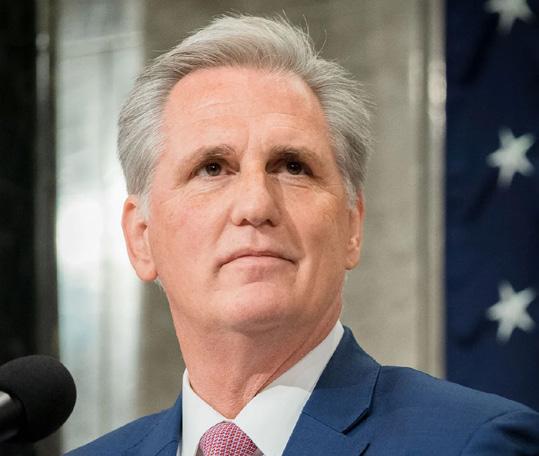
October 4, 2023: Kevin McCarthy (R-CA) becomes the first Speaker of the U.S. House of Representatives to be removed from office after fellow Republican hardliners, led by Matt Gaetz (R-FL), vote for his ouster.

October 8, 1871
The Great Chicago Fire kills an estimated 300 people and destroys over 4 square miles (10 square km) of buildings and the original Emancipation Proclamation
Source: Onthisday.com.
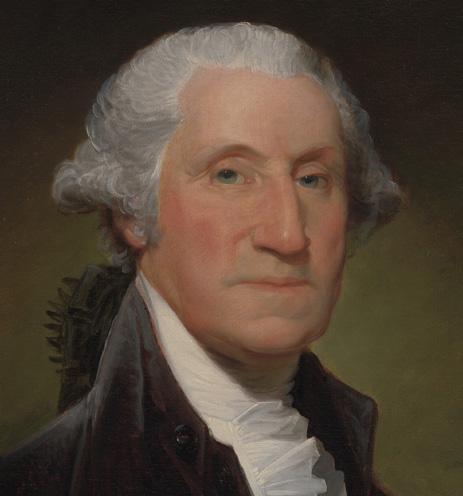
October 2, 1789: George Washington transmits the proposed constitutional amendments (United States Bill of Rights) to the states for ratification.

October 7, 1959: Far side of the Moon is seen for the first time, courtesy of the USSR’s Luna 3 space probe.

By PJ Balzer
‘Hey Son, This is a Better Way’
This past Friday evening, I brought a close friend with me to watch a high school football game. This friend specifically doesn’t know much about football or about the inner workings of my community. Each community has its own history, struggles, victories, and ambiance that makes it unique to the next. I always appreciate his perspective on the game, environment, and other things he may find noteworthy or interesting, because he’s looking in from the outside. Sometimes, outsiders give us perspective that we haven’t thought of ourselves.
We sat all the way up at the top of the bleachers with a group of fathers who have kids on the team. They are loud, really proud, definitely love the sport, and aren’t afraid to let it be known. Even more than the sport itself, they love that their son has their own last name on the back of a green and white jersey. This section of the bleachers is lively and gets passionate, especially when November rolls in and it’s playoff time.
My friend made two very honest and interesting observations this past Friday night that caused me to pick up the pen this week. One is that these guys really get into their son’s playing varsity football, almost coaching and refereeing from the bleachers. Two is that most of the guys sitting around us had some sort of noticeable scars on their head, neck, or face - scars that looked like they came from a knife or razor blade. Certainly not said in a derogatory or demeaning way, but simply an observation that an insider like myself doesn’t see any more.
I spent all weekend thinking about how these two are undoubtedly related. The excitement over our football team and the scars gained along the journey.
My town was hit pretty hard with the crack cocaine epidemic back in the 1980s and 90s on the blocks that some of those guys grew up on. They are now proudly sitting there watching

their kids. I remember it being total chaos when we were just kids. The drug epidemic ripped many fathers out of the houses whether through using, selling, or just getting caught up in street life. This in turn left many young women alone with small children and teenagers. They alone had to figure out how to provide, raise boys into men, and protect their home from the evils lurking right outside the front door.
Many of my friends had to step into a man’s role very young. They were forced to grow up fast and figure out how to help their mom and protect their household while they themselves were still in middle school - middle schoolers that should have been playing sports, pursuing extracurricular activities, and ultimately just being kids.
Simultaneously, the many effects of the crack epidemic were literally right outside of the front door. There was constant thievery, manipulation, and violence going on. A few hundred feet from their front door were grown adults figuring out how to get high, get over on each other, and get their hands on money in any way possible. Some of my friend’s mothers also ended up getting addicted to the drug while leaving their
teenagers at home to care for their younger siblings.
Simply attending school was a daily struggle because of the instability both inside and outside the home. The streets swallowed up many of my friends who succumbed to an overwhelming environment. Someone once told me, “The law of the jungle is that there is none. You do whatever you have to do to survive.”
Not necessarily the right way to live life, yet if you’re born into that environment and haven’t been taught a different way, what else would you expect?
Hence some of these visible scars.
As we grew up and got older, experienced life and had children, many of my friends wanted and fought hard for a different life for their kids. They made it their mission to teach their kids a better way, to fight their kids’ childhood to be intact and for stability. They taught them some of life’s wholesome and valuable life lessons earlier than later. They pushed their kids to stay in school, get a good education, and pursue a club, sport, or hobby. To operate with honesty, discipline, and to work hard at things that would matter in the future. Many realized that the way that they grew up wasn’t necessarily the right way and that their kids deserved better. They deserved to experience being a child and not forced into a man’s role at a young age. They deserved to have the resources to play a sport and parents that cheered them on every step of the way. They deserved a father who was excited to see their son sack the opposing quarterback under the Friday night lights in late September.
Hence all of the excitement this evening.
While some of these scars definitely tell a story and make us who we are today - I ended up with one on my own arm as well - I can’t help but to be really proud of seeing these grown men and Father’s sitting there telling their son, “Hey Son, this is a better way to go.”

By Messenger Staff
Napolitano Makes History with Ace
Smithtown High School West junior Ryan Napolitano delivered the rarest shot in golf last week, recording a hole-inone at Smithtown Landing Golf Club.
Napolitano aced the par-3 seventh hole during team play, turning a routine round into a memory that will last a lifetime. The moment was witnessed by teammates, coaches, and competitors alike, adding to its
significance and ensuring it will be remembered across Smithtown West athletics.
The timing carried an added twist of





excitement: the ace came just days after Long Island hosted the prestigious Ryder Cup. As the global golf stage shifted to local fairways, Napolitano seized his own spotlight, etching his name into Smithtown West golf history.
Smithtown High School East and West student members of the fundraising club, Relay For Life, were honored by the Smithtown Central School District Board of Education on September 30.
The students, who raised $86,660 at their annual Relay For Life event this past June, was previously announced as the winner of the Spring 2025 NYSPHSAA Community Service Challenge. The club’s culminating event was selected by the NYSPHSAA Student-Athlete Advisory Committee for its outstanding impact and student engagement.
District Director of Athletics, Jason Lambert, presented the students and adviser, Dillon Archer, with a banner from the NYSPHSAA. In addition, the board of education presented certificates of recognition to the students.
“The hard work and dedication from the members of our Event Leadership Team, which consists of all studentathletes, to put our event together has been remarkable,” said Archer. “To watch it all come together, be a great success, and now be recognized is the best part of being their advisor and teacher.”
Held at Smithtown High School West, the Relay For Life event featured students taking turns walking the track for 12 hours straight, raising more money with increased participation. Additional donations were made through food sales and supplemental activities provided during the evening. All proceeds from the event were donated to the American Cancer Society.
Thursday, October 2, 2025
Smithtown HS West Sweeps East Islip
The Smithtown West girls volleyball team continued its strong season with a convincing 3-0 sweep over East Islip on Monday, extending their winning ways and showcasing their depth on both sides of the ball.
The Bulls set the tone early, storming through the first set with a dominant 2512 performance. East Islip found a bit more rhythm as the match wore on, but Smithtown West never let the momentum slip, closing out the next two sets 25-18 and 25-21 to secure the straight-set victory.
with precision and piled up 17 assists on the night. The combination proved too much for East Islip to contain.

Junior standout Taylor Marsh fueled the offense with 11 kills, giving Smithtown West a consistent scoring presence at the net. She was backed by setter Kalia Wheeler, who distributed the ball
With the win, Smithtown West improved to 13-31 on the season, further cementing their reputation as one of Suffolk’s most balanced and dangerous teams. East Islip, still searching for its first victory, fell to 0-2.
Looking ahead, Smithtown West will hit the road for a matchup with Deer Park on Friday at 5:30 p.m. East Islip will aim to regroup before traveling to face Hauppauge on October 8 at 4:00 p.m. For Smithtown West, the sweep not only adds another victory to the column but also demonstrates the kind of sharp execution they’ll need with the postseason approaching.

Smithtown High School Relay For Life Honored By Board of Education


By PJ Balzer
The First Annual ‘Play for Gilmore’ Game
It was just the way she would have wanted it.
Her family gathered together along with multiple teams, towns, and even counties. The sport she loved was on full display, generosity and giving back going on at the same time.
Adrian Gillmore would be extremely proud to see what her life on earth signified.
Coach Adrian passed away suddenly this past spring. While she was coaching at Shoreham-Wading River, Gillmore unexpectedly suffered a brain aneurysm while on the field. She was attended to immediately and rushed to a nearby hospital, but ended up passing away the following day at the young age of 42. She left behind her husband Tim and three children, who have since taken up her torch and turned something painful into something useful and positive, “The Gillmore Game.”
Prior to kickoff, Adrian Gillmore’s husband Tim and her daughter Kayla took center field to greet the crowd. Along with Shoreham-Wading River’s current girls’ varsity soccer coach, Lydia Kessel, who was coached by Gilmore and now has been tapped to fill her position.
“My mom loved where she coached and where she grew up and played soccer. We’re so thankful that Shoreham-Wading River and William Floyd both made a commitment to participate. There is a gaping hole today without her here, but this is what her life consisted of - her family, sports, and giving back,” said Kayla Gillmore, a William Floyd graduate and all-American girls lacrosse player who is now playing at Maryland in her Sophomore year.
With not many dry eyes on the field or in the stands after her family opened the day with heartfelt words, the William Floyd girls’ soccer team took on Shoreham-Wading River in the opening game. Additionally, a second game saw the boys’ Shoreham varsity soccer team taking on Garden City. Shoreham, a renowned soccer powerhouse with multiple league, county, and one New York State titles under Gilmore’s leadership, defeated the Colonials 5-1, while the boys defeated Garden City in a much closer contest of 1-0.
Long Island Basketball History: Player of the Week
Support for this game poured in from every angle of the community as people volunteered their time and rolled up their sleeves to make such a special day possible. Tim Gilmore’s student athletes on the ShorehamWading River boys’ varsity basketball team came out in support of their coach and his family, along with Bayport-Blue Point student athletes who were also in attendance in solidarity with the other schools present with the Gillmore family.
The female players wore burgundy ribbons in their hair for Brain Aneurysm Awareness Month, while the males wore the same color armbands. Baskets and other items that were donated by the schools present, along with multiple organizations who stepped up to help, were raffled off with the proceeds going to support the Gillmore family.
Adrian was someone who not only cared deeply about her students and the soccer program at Shoreham-Wading River, but also in helping those students find the potential in themselves no matter the challenges, disabilities, or adversities they may face in their lives. She always tried to meet people where they were currently in their life and communicate and support them in a way that was uplifting to help them find a path forward, or simply help them with guidance in reaching their own individual goals and aspirations.
The event was special and they did a great job in encapsulating the qualities she tried to live in her life. We thank the Shoreham-Wading River and William Floyd Girls’ Soccer Programs and both communities for their compassion, love, and commitment to preserve the memory and life of Adrian.
We would also like to give a special thank you to all the lady Wildcats past and present that showed up to support their former coach. Also, those that reached out to us personally but were unable to make it on Saturday. The soccer program has been great all of these years because of their commitment to the program’s success and their unwavering dedication to Play For Gilmore,” the Gilmore Family.
#playforgilmore
- Averaged 35.95 points per game in Suffolk County regular season play — setting a county record with 719 points in a single season.
- Finished career with 1,578 points and an impressive 475 free throws made.


Smithtown
On The Hunt
Smithtown East couldn’t keep pace with East Islip, falling 6121. The Bulls’ defense struggled against a relentless Redmen offense.
Meanwhile, Smithtown West delivered a statement win, edging West Islip 13-6 behind Michael Cascione’s 143 rushing yards and a touchdown. The defense held strong late to seal it.


Islip Brings It Home
Islip rebounded at home with a 34-22 victory over Hauppauge, finding rhythm after a tough stretch. The balanced attack kept Hauppauge chasing from the first quarter onward.
West Islip dropped a defensive battle to Smithtown West 13-6, with their lone score coming on a TJ Sonnenberg to Conor Kenefick touchdown pass.



Brookhaven Brings It Home

BROWN

- Posted 60 consecutive double-figure games, including a 53-point effort against Riverhead.
Bellport overwhelmed Commack 47-7, reminding the league why they’re perennial contenders. The Clippers dominated on the ground and through the air, leaving little doubt.
Elsewhere, Longwood rolled past Brentwood 50-20, while PatchogueMedford earned a gritty 24-14 win over Central Islip, giving the Raiders momentum heading deeper into Division I play.
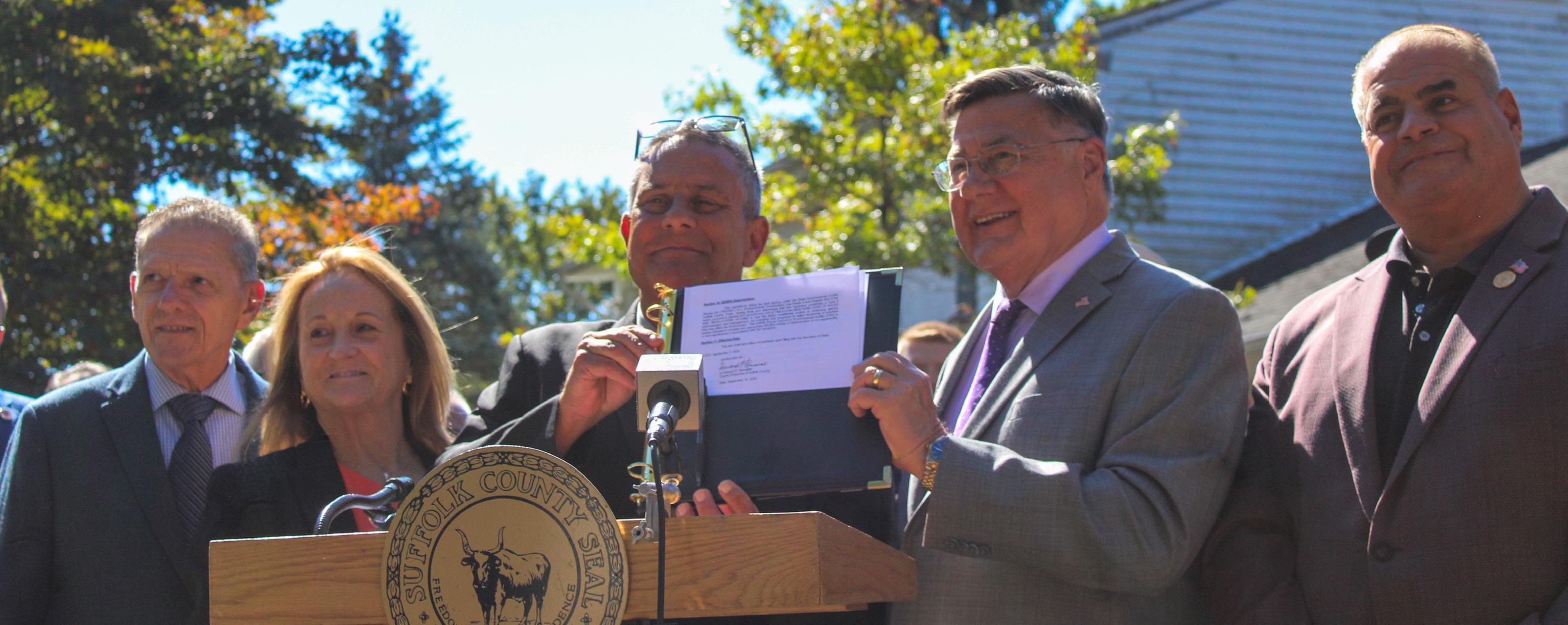
By Matt Meduri
Romaine Signs Thorne’s Consumer Protection Bill
Suffolk County Legislator Dominick Thorne (R-Patchogue) sponsored legislation to curb actions by unscrupulous contractors who either act as or pose as board-up providers on the scenes of house fires.
I.R.1524-2025 passed unanimously at the last General Meeting of the Legislature. It was co-sponsored by Legislators Chad Lennon (C-Rocky Point), Rebecca Sanin (D-Huntington Station), and Stephanie Bontempi (R-Centerport) before heading to the full Legislature.
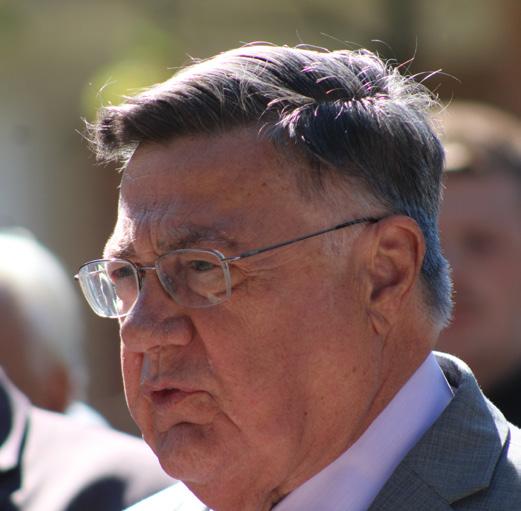
Such contractors often go to sites of house fires, even beyond the active fire line, to offer their services for boarding up windows and entry points to the house. Often distraught and traumatized by the tragedy of a house fire, some residents have been duped by the contractors who either perform incomplete work or just take the money and run.
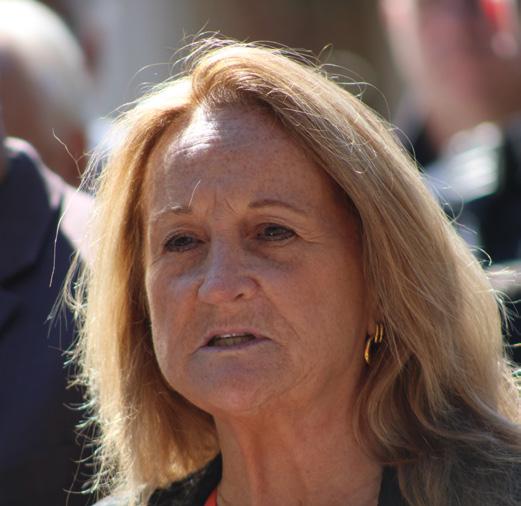
Suffolk County Executive Ed Romaine (R-Center Moriches) signed the bill into law near the North Patchogue Fire Department on Wednesday afternoon.
“This legislation will protect our consumers and stop these contractors, who, for lack of a better word, are vermin that prey on our residents in their most horrible times, either when their house is burned or another emergency has happened,” said Thorne. He was joined by Legislators Catherine Stark (R-Riverhead) and Nick Caracappa (C-Selden), Suffolk County Clerk Vincent Puleo (R-Nesconset), the Suffolk County Fire Marshals Association, the Chiefs Association, Fire, Rescue, and Emergency Services (FRES) Deputy Commission Joe Trzepizur, and Jack Blaum, Assistant Chief County Fire Coordinator and North Patchogue F.D. Commissioner.
Thorne said the contractors have been observed from “Montauk to the County line”, often with scanners in their cars trying to “beat our firetrucks to the scene.”
“They may misrepresent who they are, stating often that they’re from the fire department,” said Thorne, adding that they often coerce fire victims into signing up for their services.
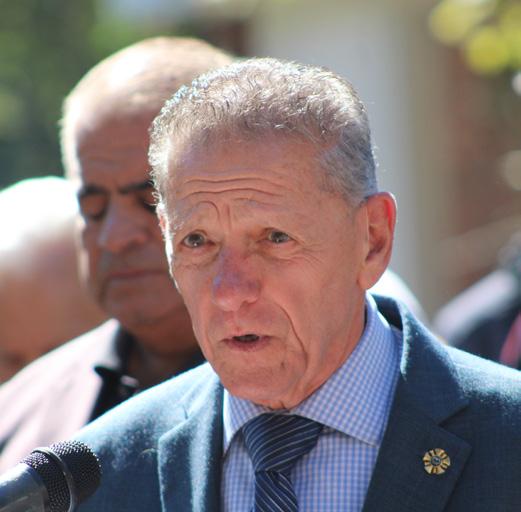
“These poor folks are being victimized by people who want to try to make a quick buck off of someone’s misery,” said Thorne, adding that there are reputable, licensed companies, such as 1-800-BOARDUP and Bulovas Restoration whom residents should consult if such services are needed.
“These are reputable companies who also support this bill, who also don’t like when somebody terrorizes or victimizes our residents,” said Thorne.
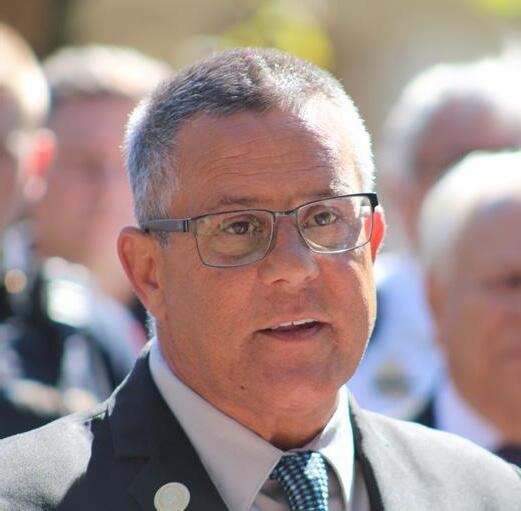
Romaine called the bill “another form of consumer protection” in protecting the homeowners, “particularly in times of tragedy.”
“We’re here to make sure that residents of Suffolk get a fair shake and are protected against rip-offs like this that happen from time to time,” said Romaine.
Legislator Stark said that Thorne is “deeply embedded” in the FRES community and that his advice is “by far top notch.”
Legislator Caracappa, an additional co-sponsor of the bill, said that such unscrupulous contractors couldn’t come at a worse time for grieving families.
“When you’ve experienced a tragic event such as a house fire, You’re not thinking straight. You’re wondering about your worldly possessions, your family’s health, your pets. You’re not thinking about who should board up your house,” said Caracappa, adding that questions of their licensure, legality, and legitimacy are not the questions at the forefront at such a time.
Commissioner Blaum said the bill has two parts, “one to protect the consumers in this county,” and the other “to work with the fire service.”
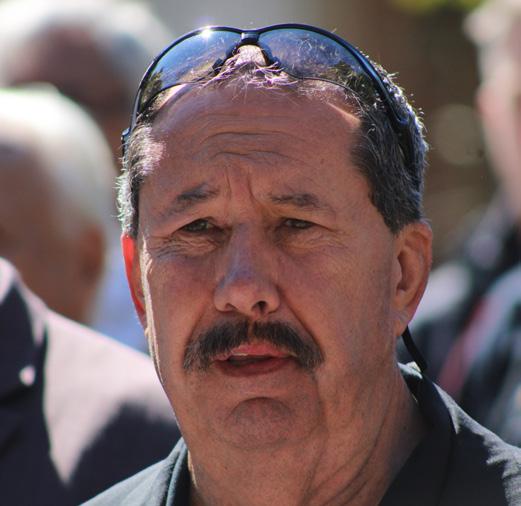
“These board-up companies will now have to identify themselves at the first checkpoint [of a fire line],” said Blaum. “In the past, boardup companies have had vehicles that look like police or fire vehicles to allow them to get to the scene quicker. Now, they’ll have to identify themselves when they arrive. They won’t be allowed to be on the street or within one thousand feet of where the fire department is operating.”
Blaum, also a former detective with the Suffolk County Arson Squad, said that companies would purchase vehicles that looked “exactly” like the unmarked arson vehicles used by the Suffolk County Police Department. Clerk Puleo, a fifty-three-year member and ex-Chief of the Nesconset Fire Department and thirty-year commissioner, said the bill “speaks volumes” to ensuring that the fire departments can focus on a fire and not worry about these contractors.
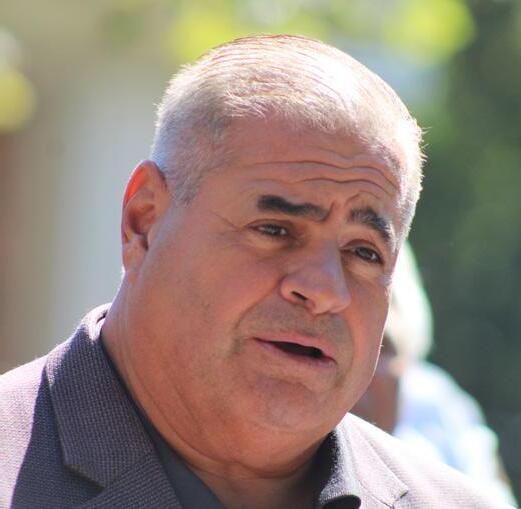
“This has happened quite often over the years,” Puleo told The Messenger. “It becomes a hassle in trying to move those people back. Our job is to put out the fire; we don’t need that aggravation.”
Offenders will be faced with a penalty of up to $5000 for the first offense. For the second offense, the same fine is imposed with the possibility of one year in jail.
Thorne mentioned a rule of thumb in closing: “if you didn’t call them and they show up, that’s an issue. These reputable companies actually wait to be called and then they come to the scene to assess your boardup needs.”
CreditBarry Fischer Photography
Catherine Stark
Jack Blaum
SC Exec. Ed Romaine
SC PD Clerk Vincent Puleo
SC Legislator Dominick Thorne
Legislator Nick Caracappa
